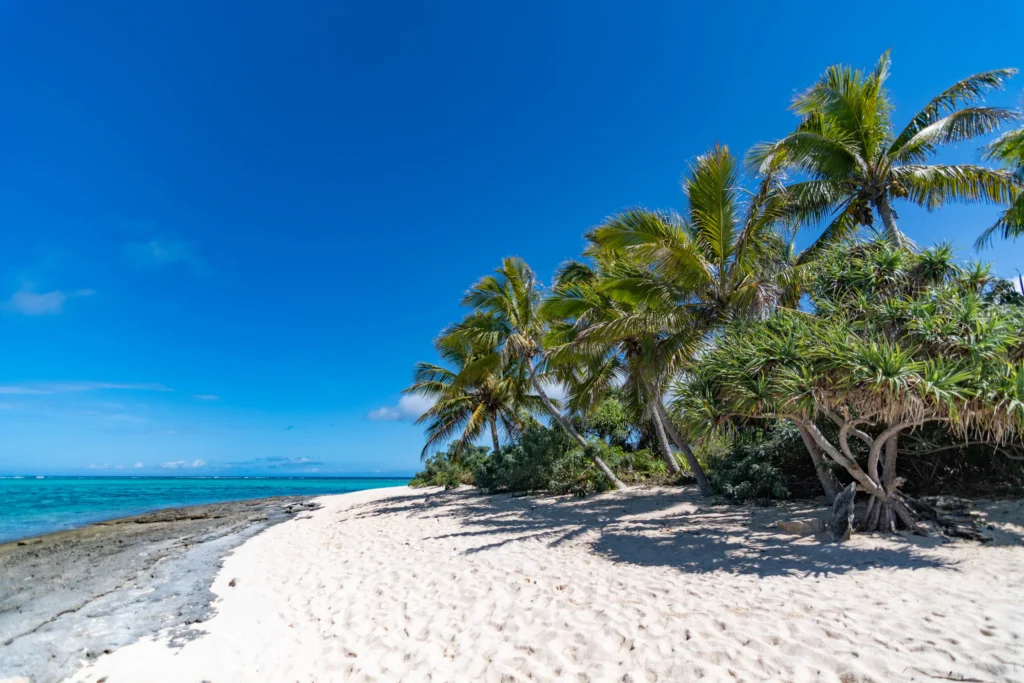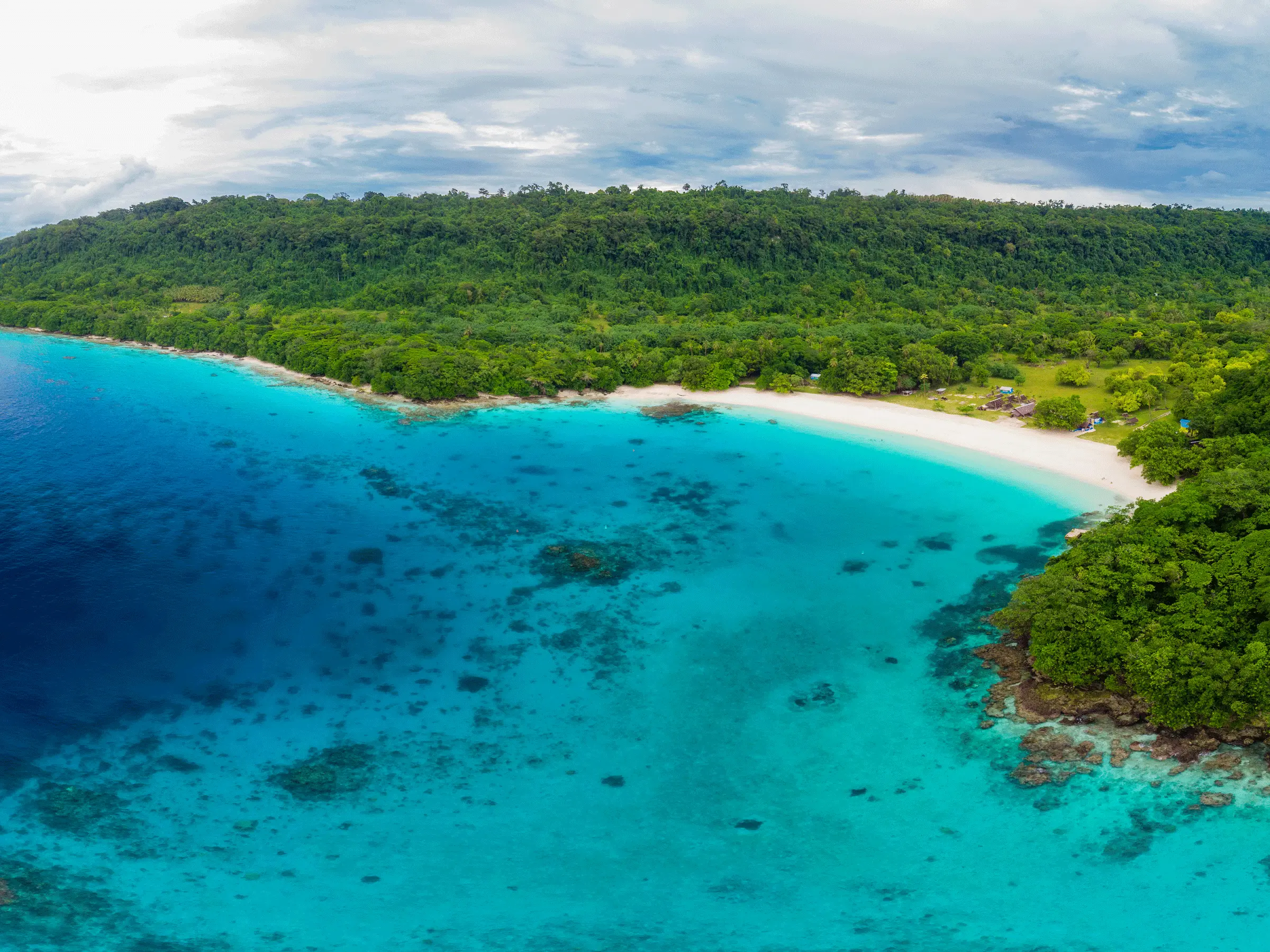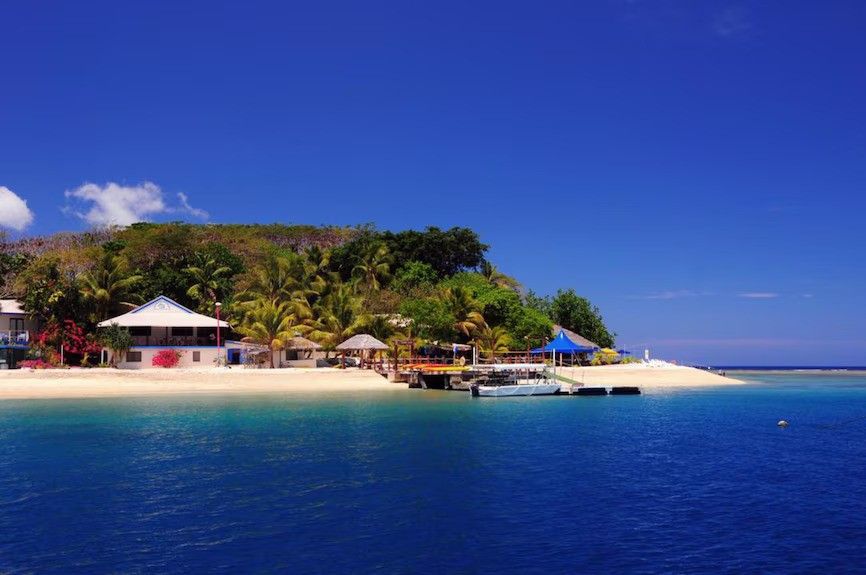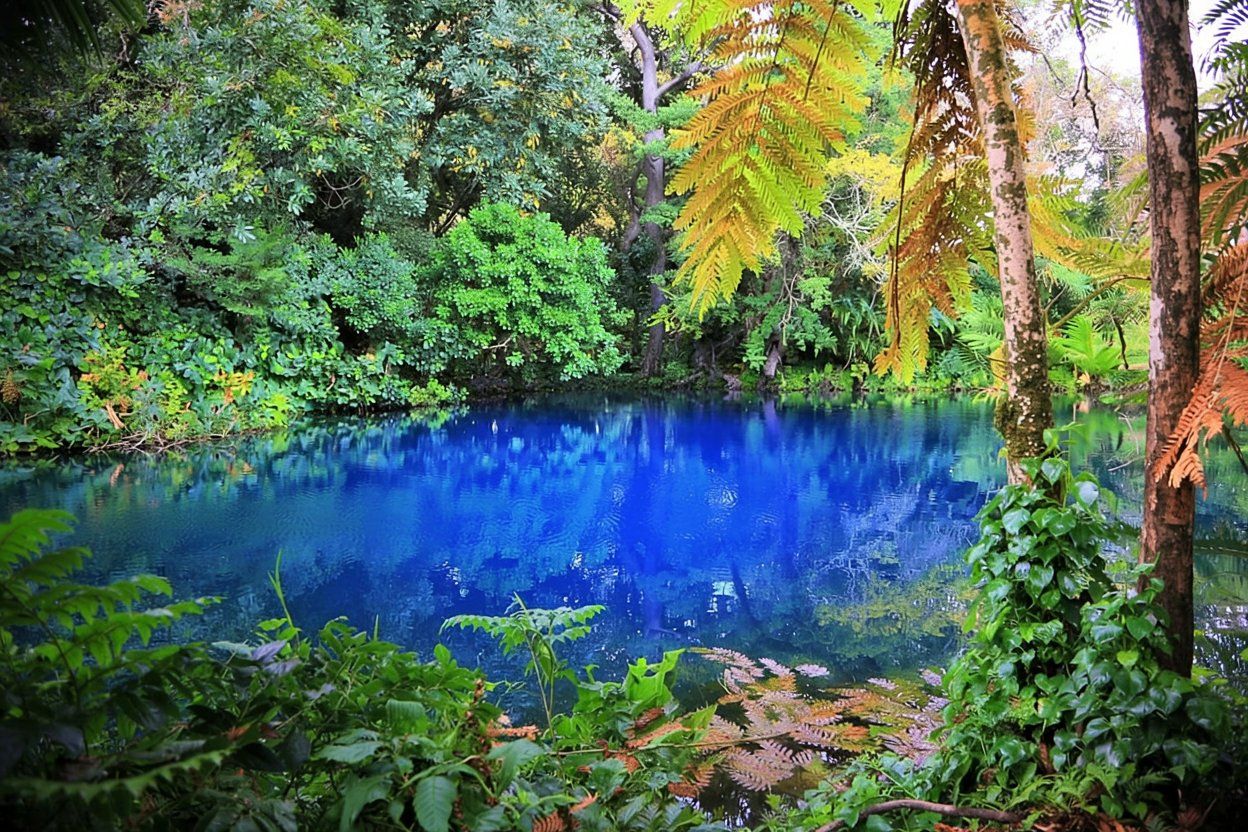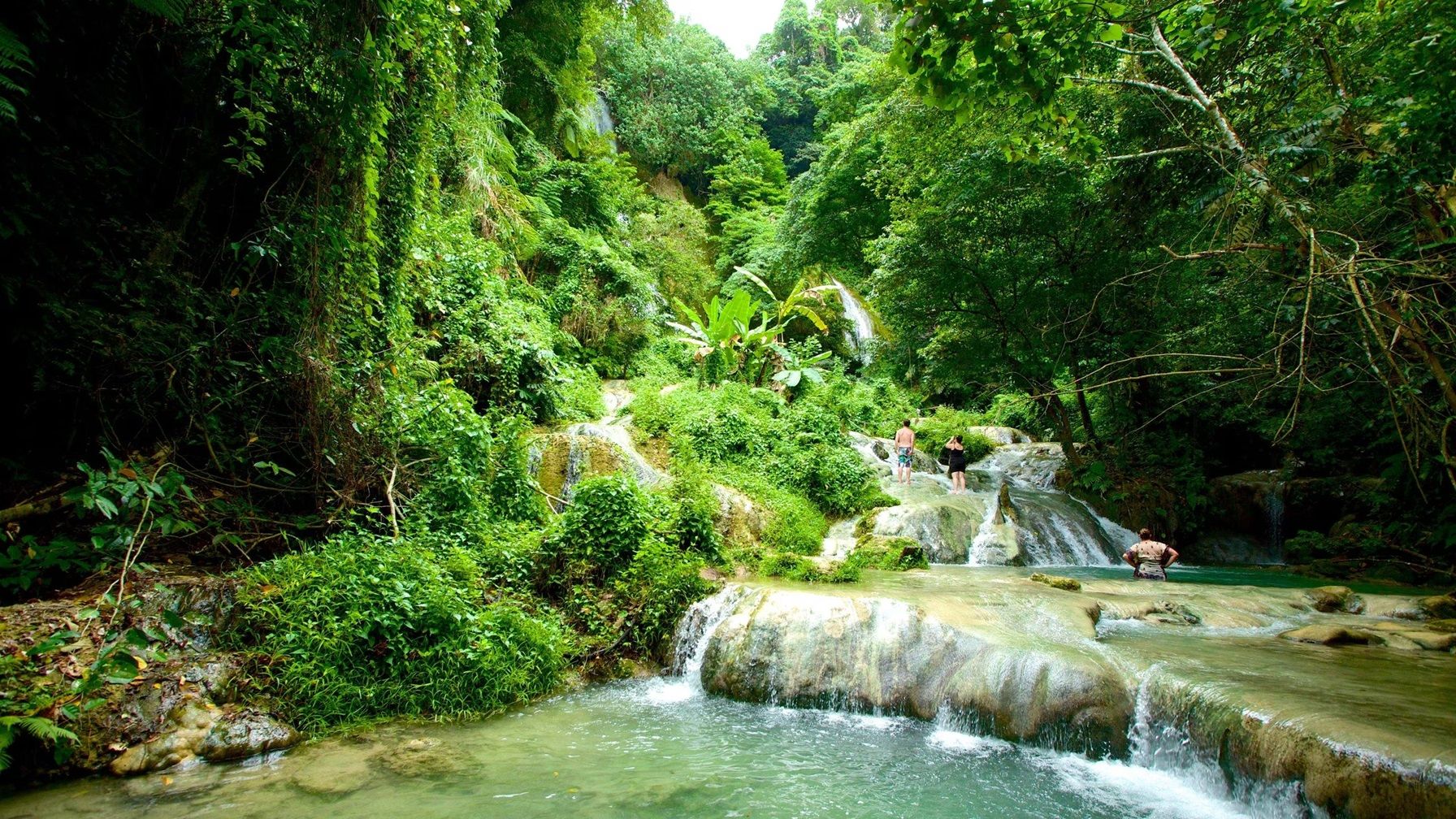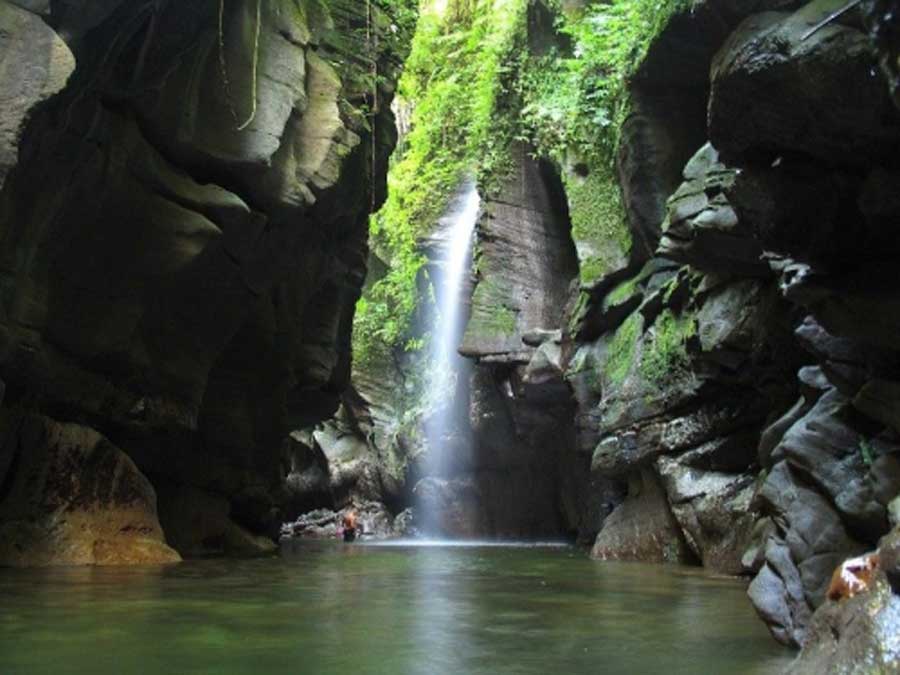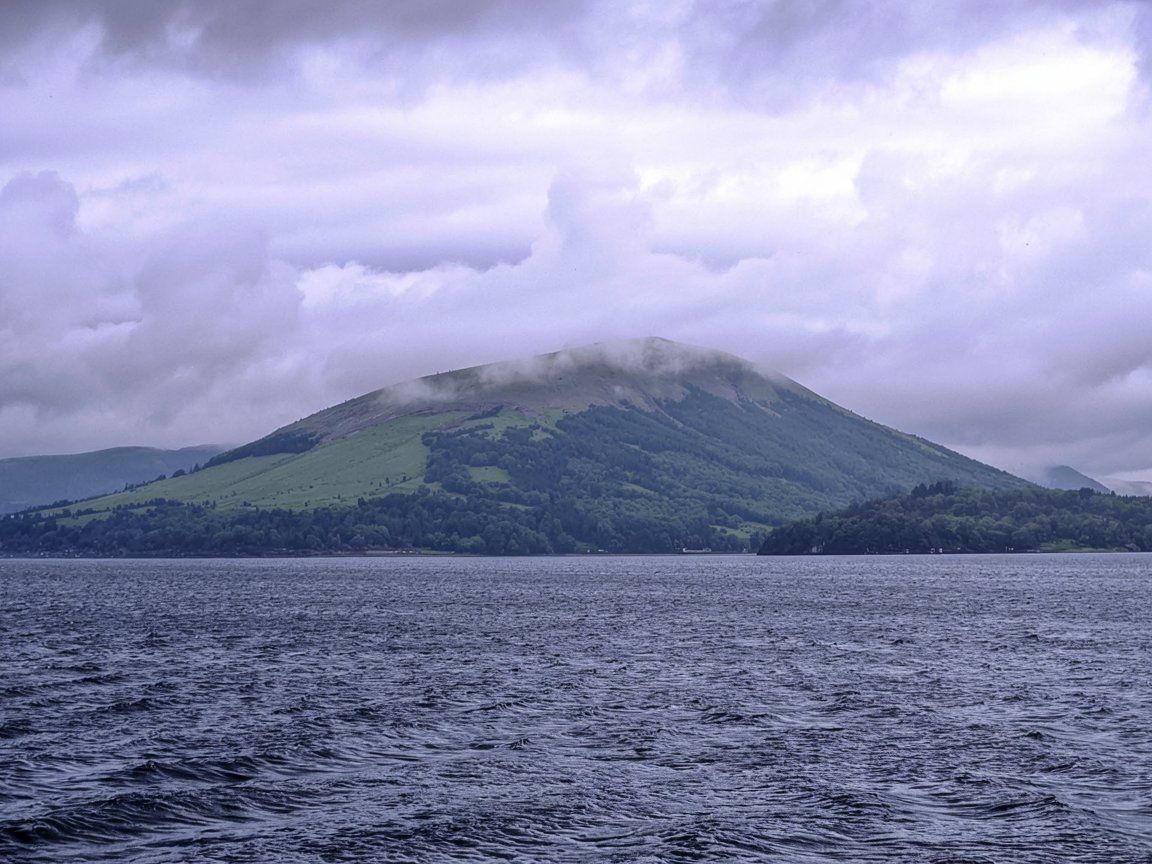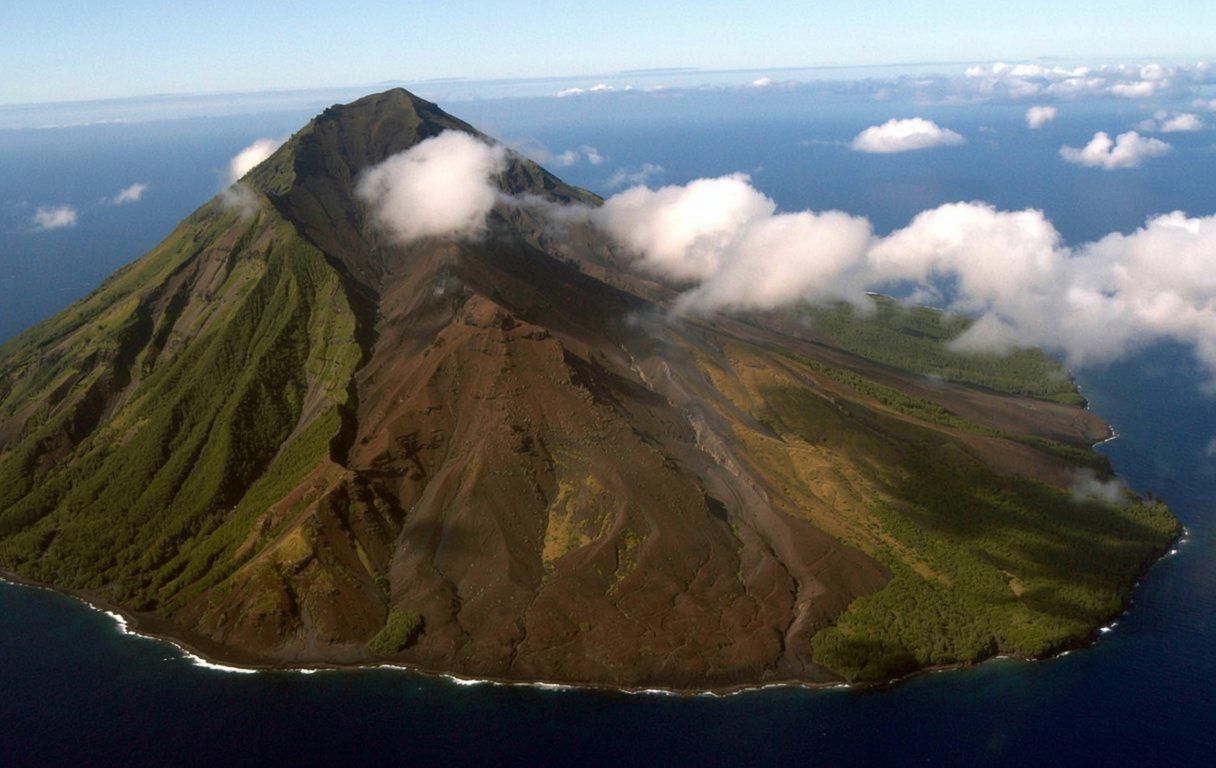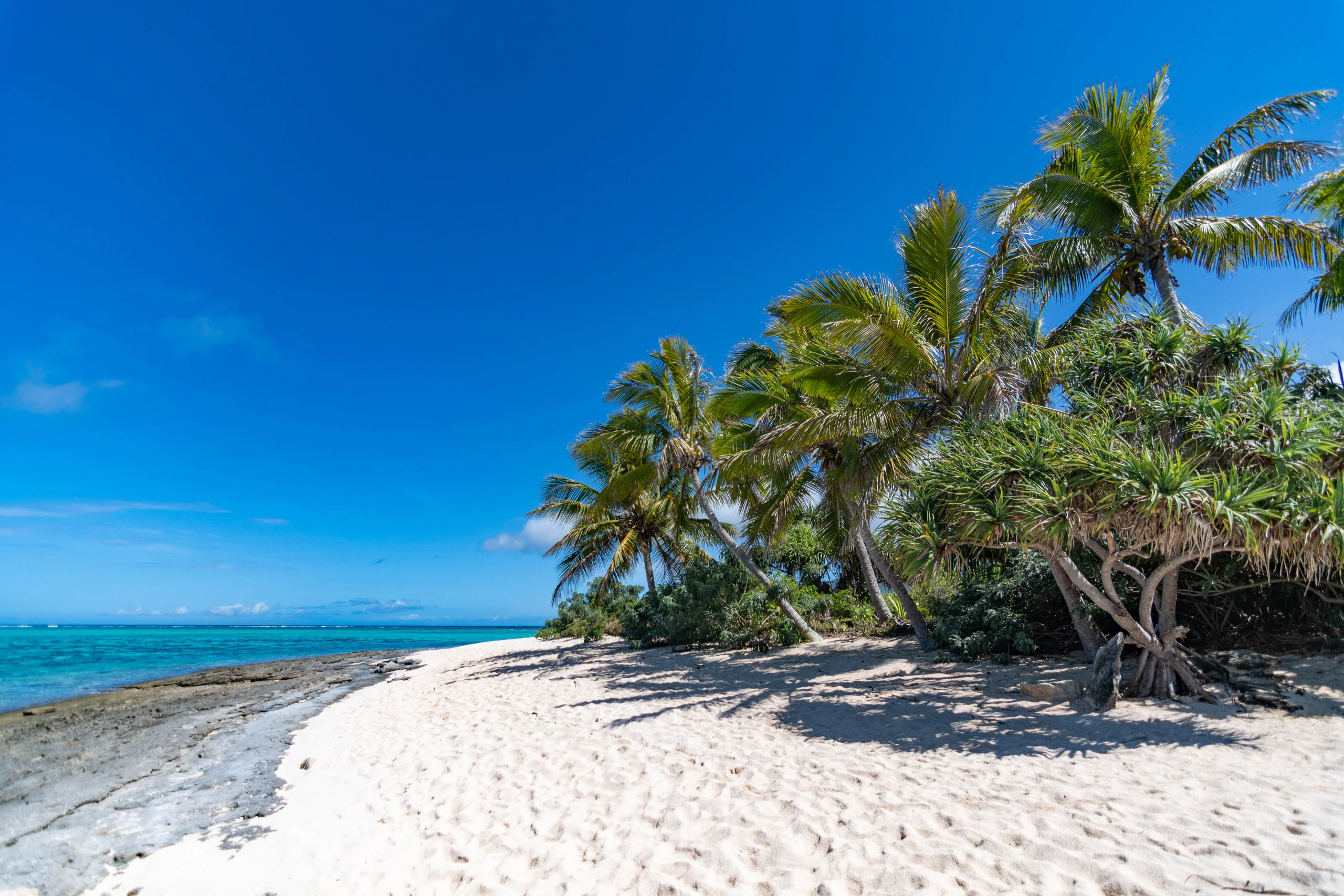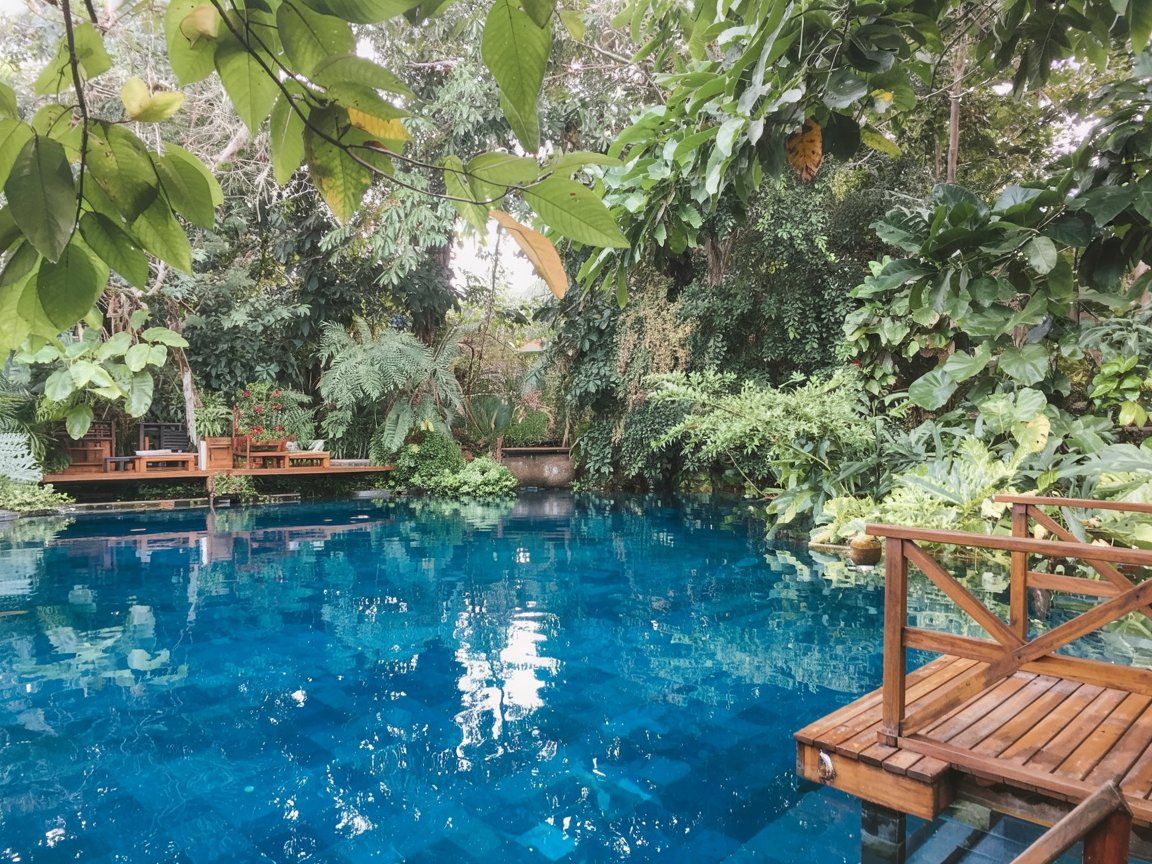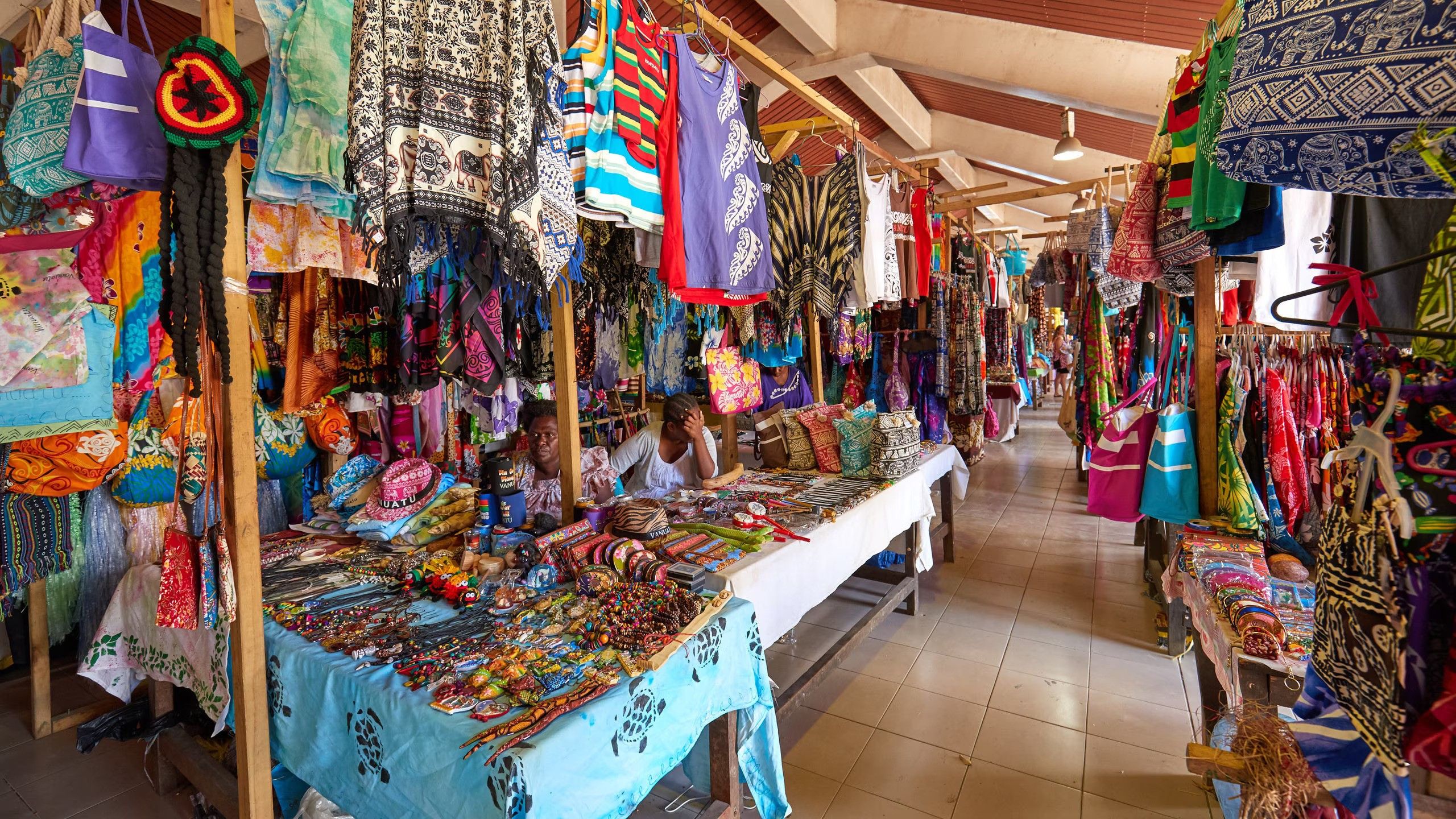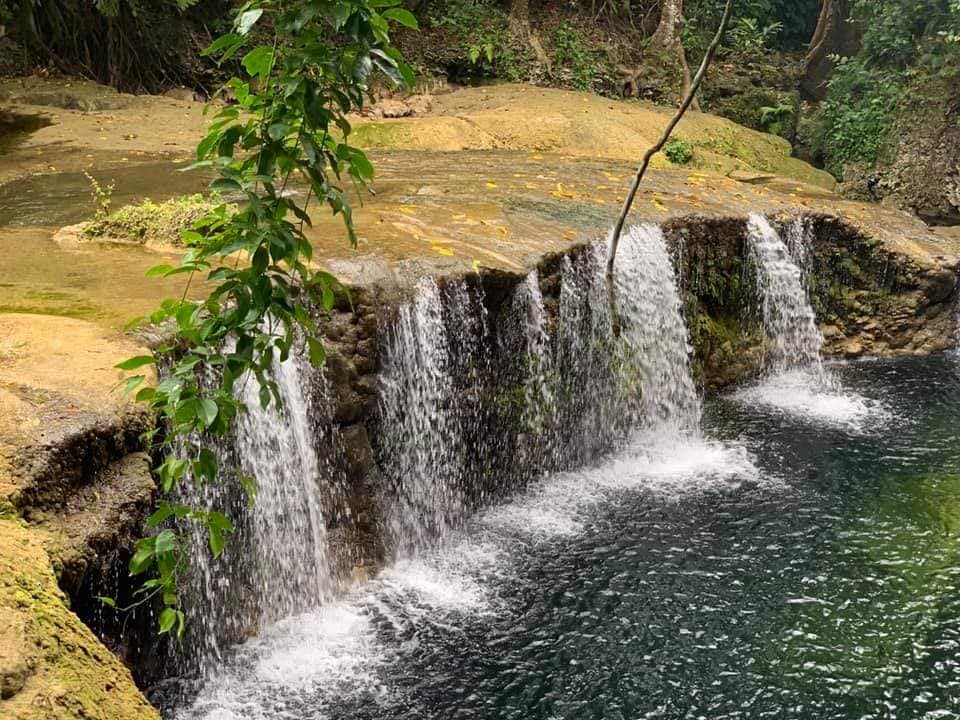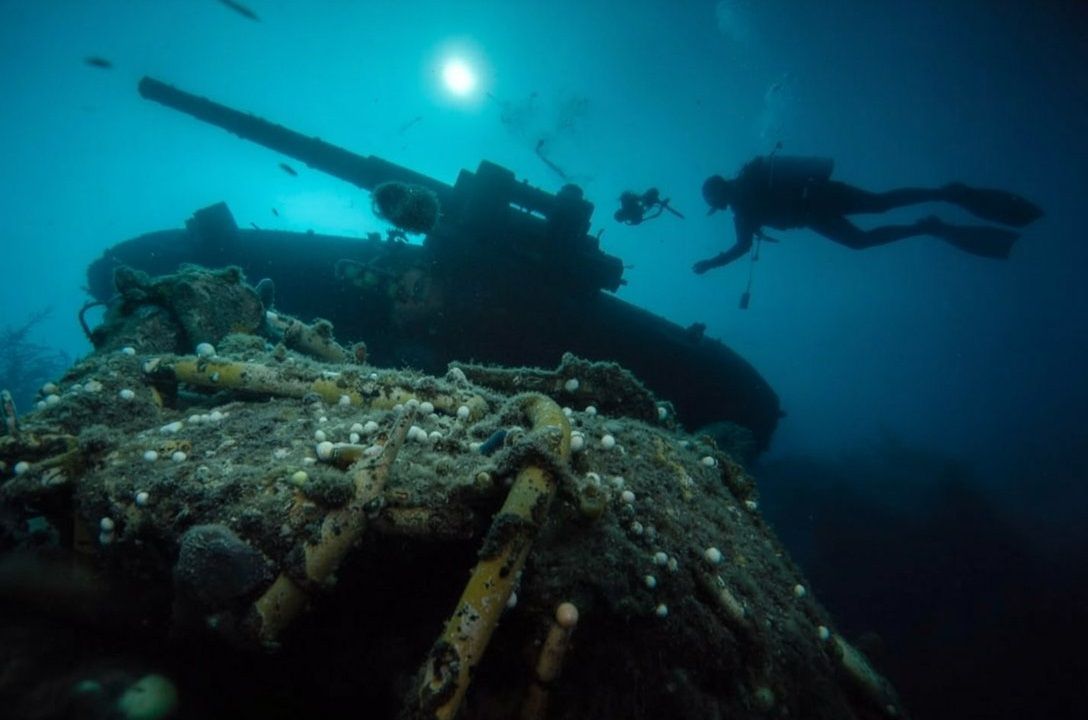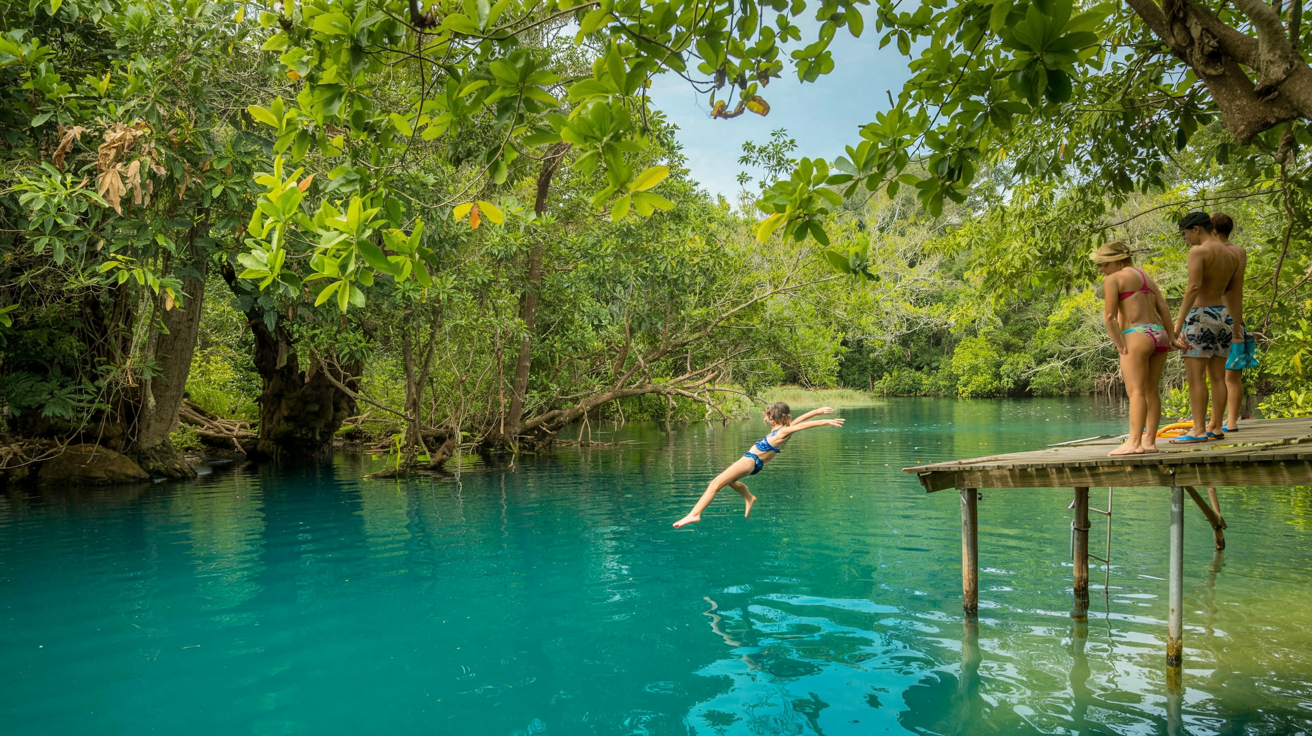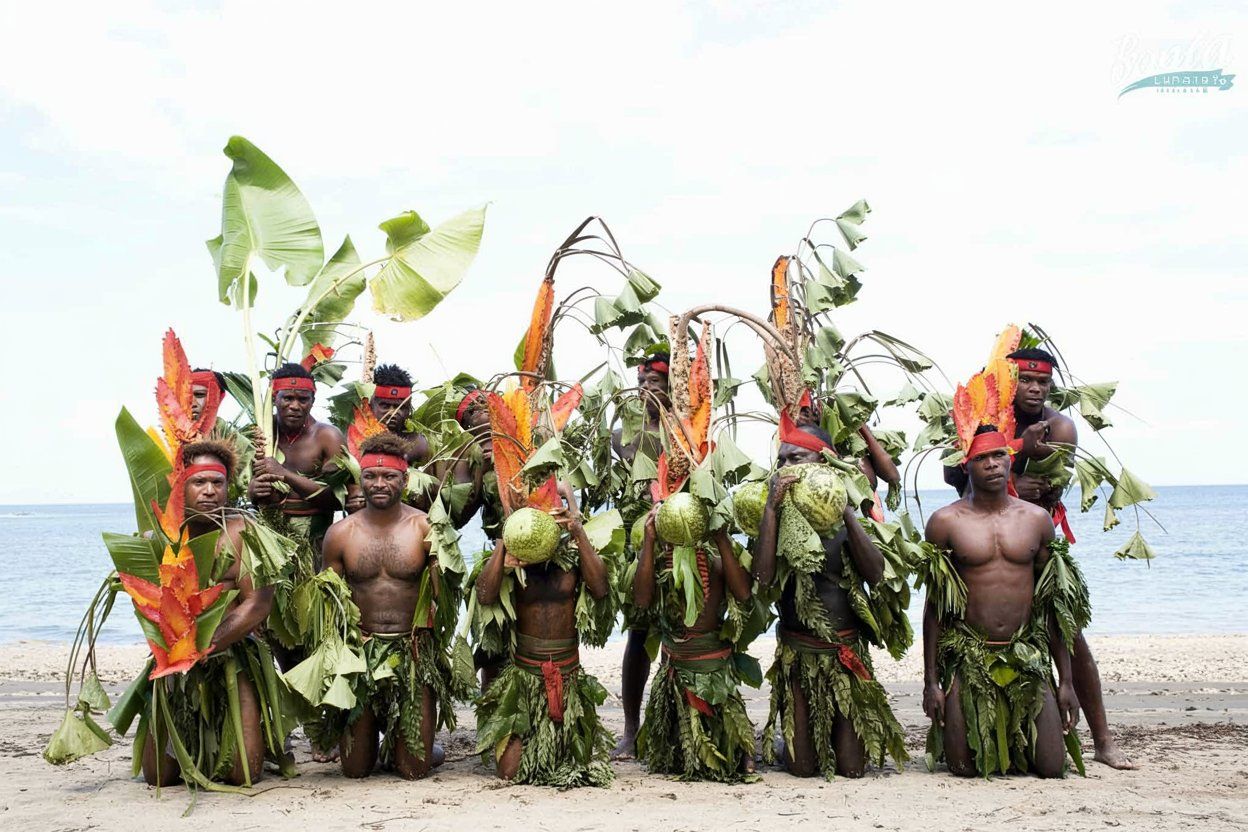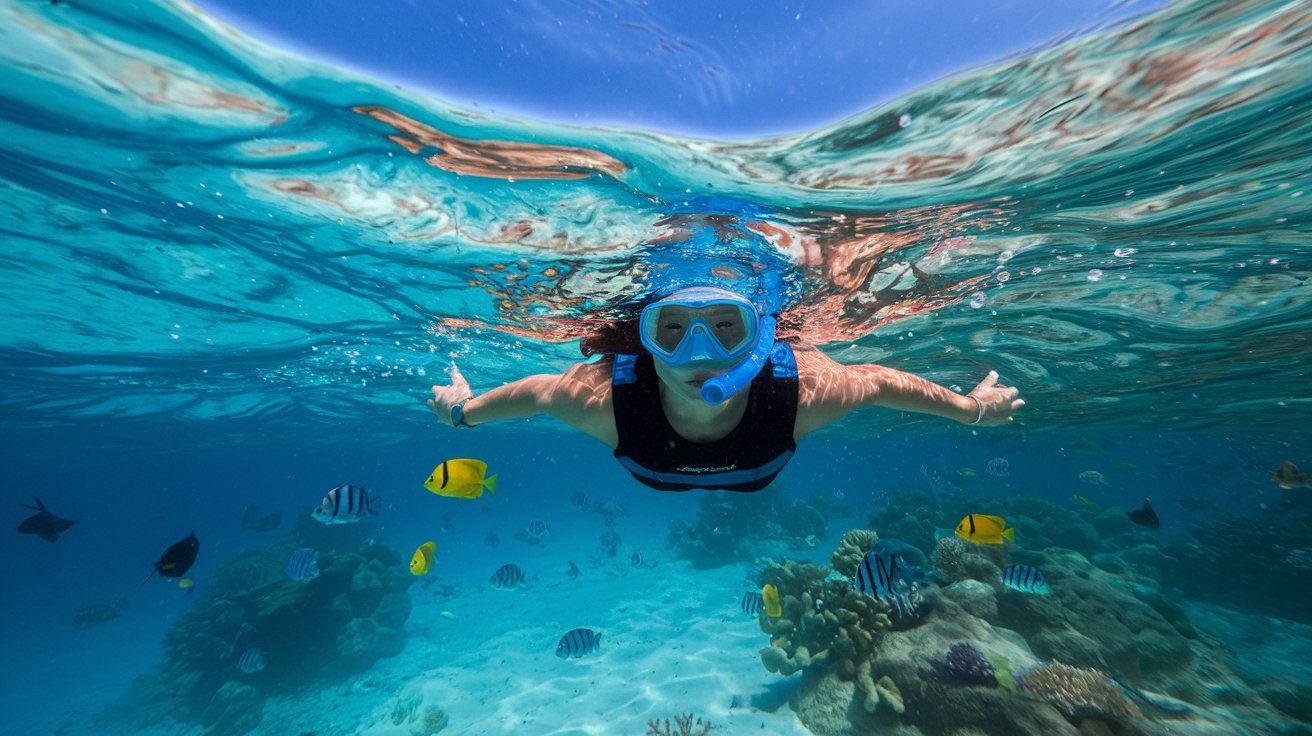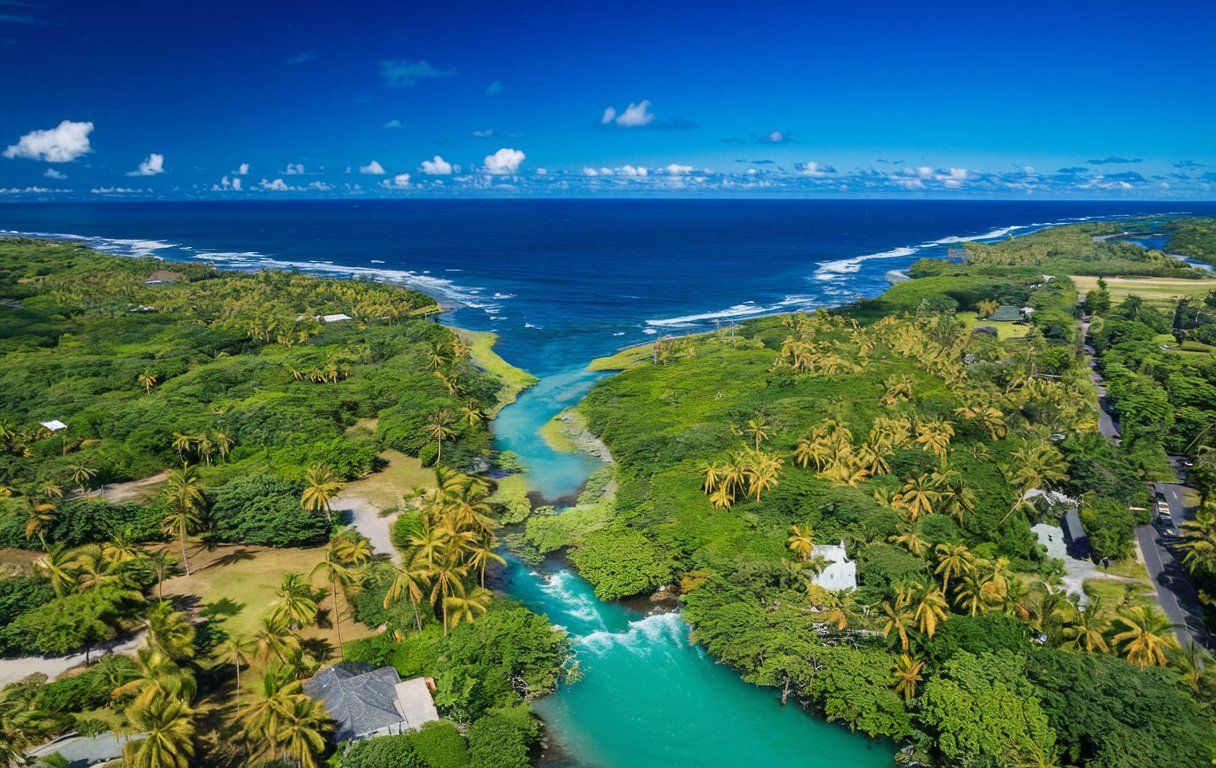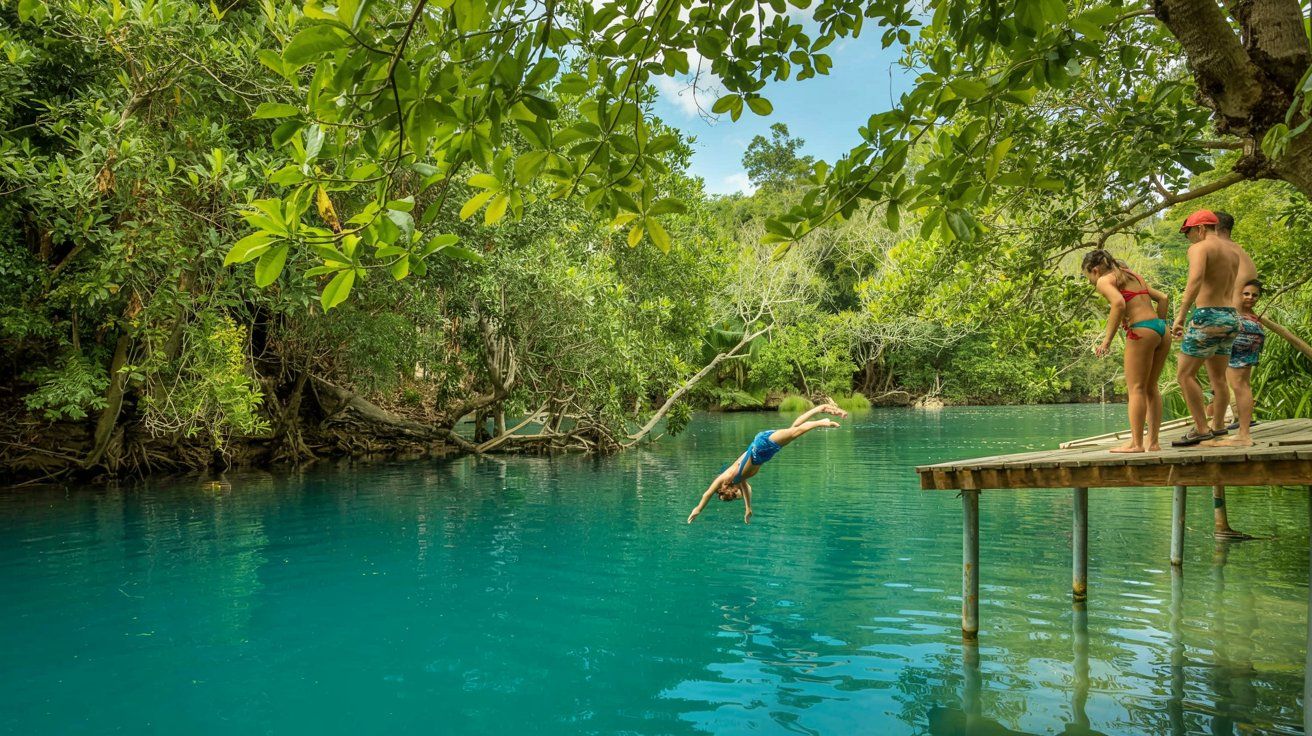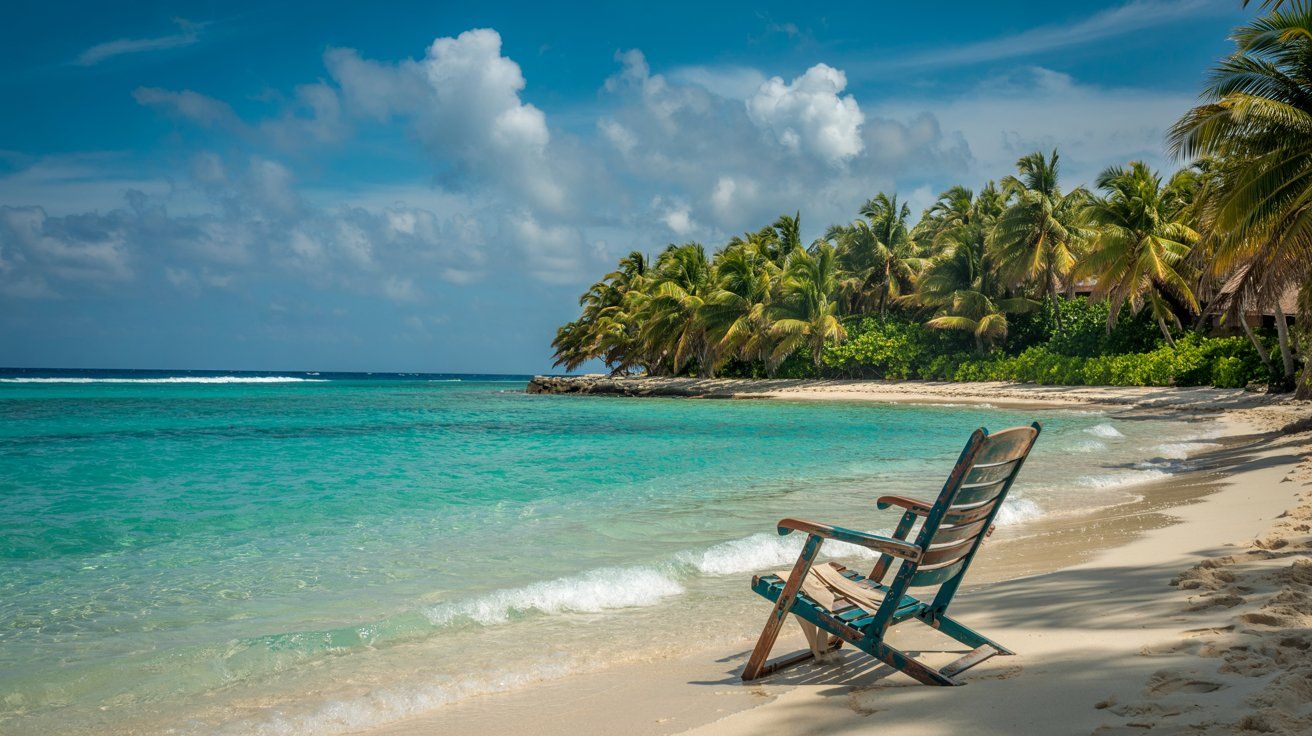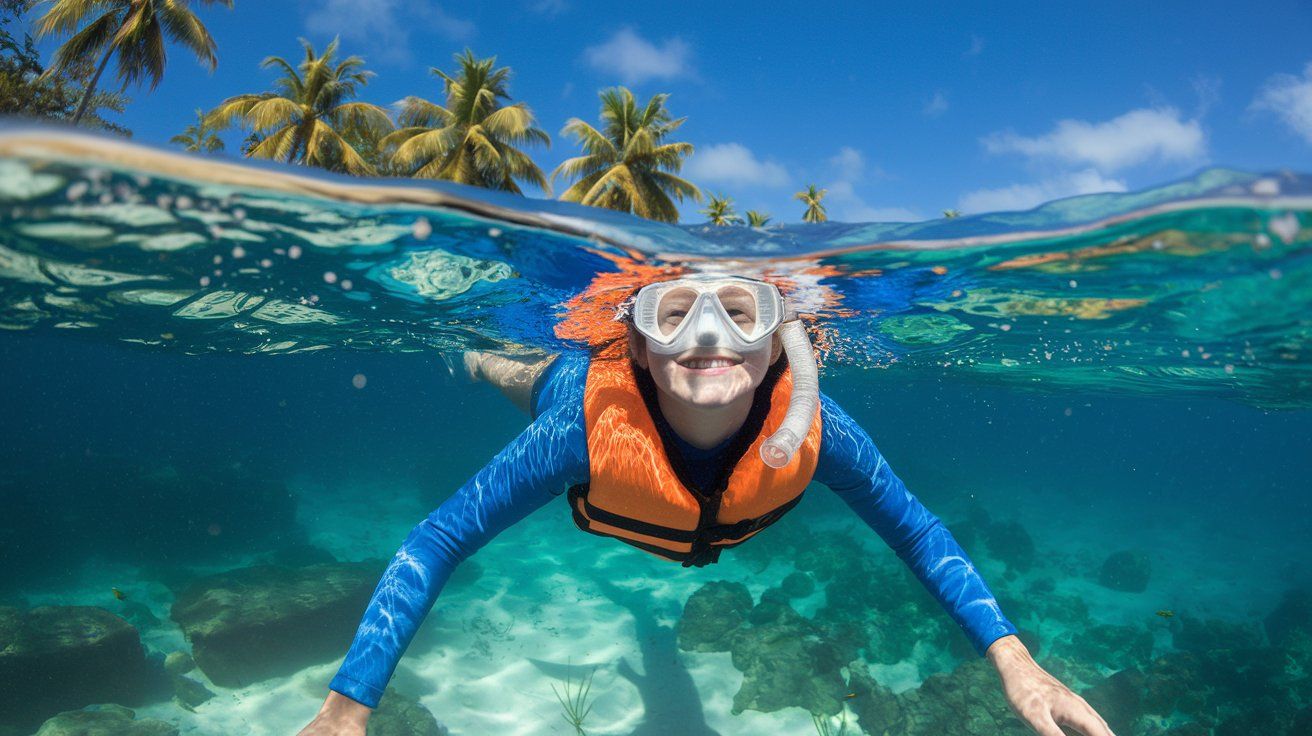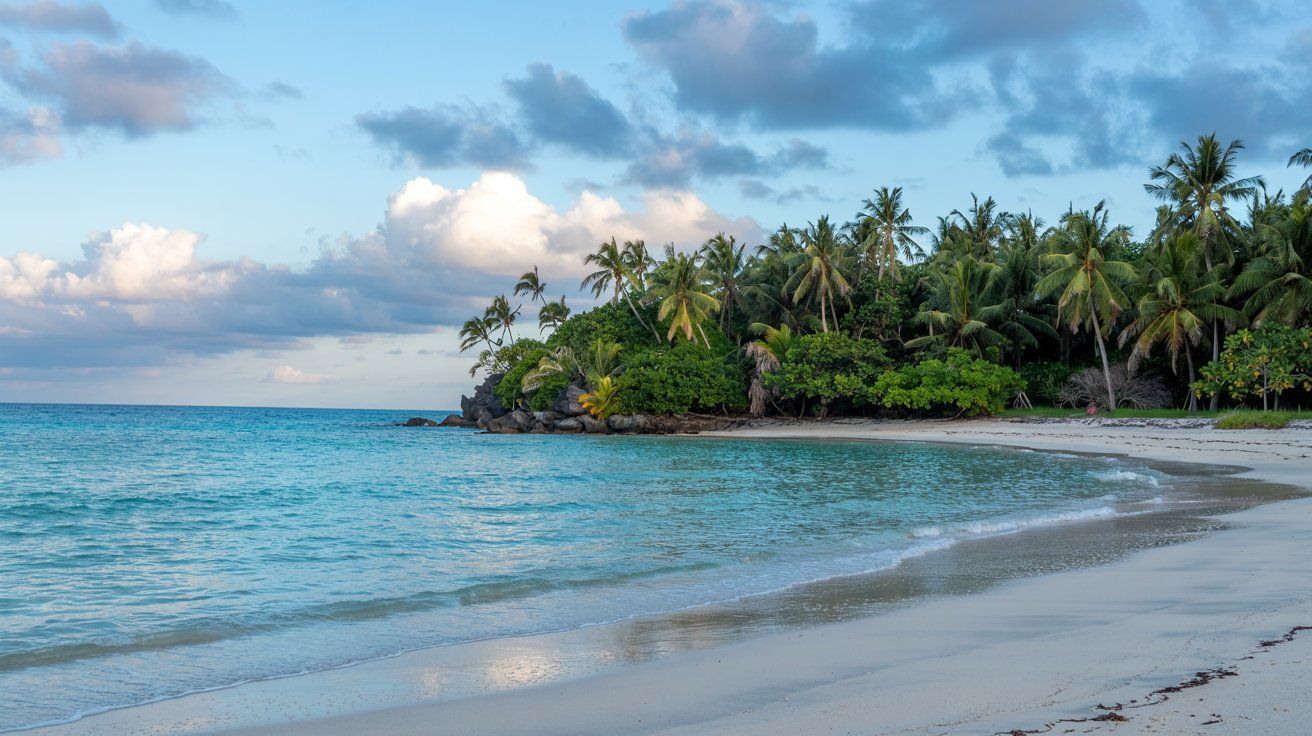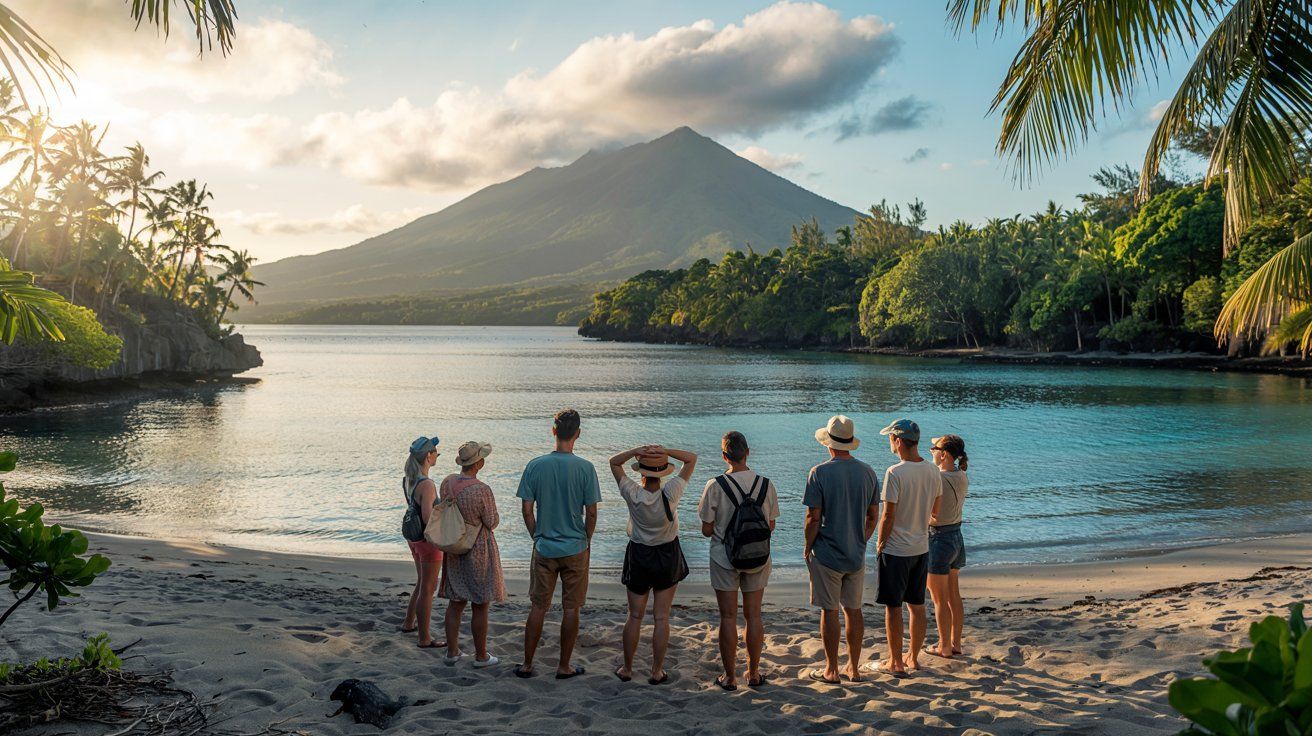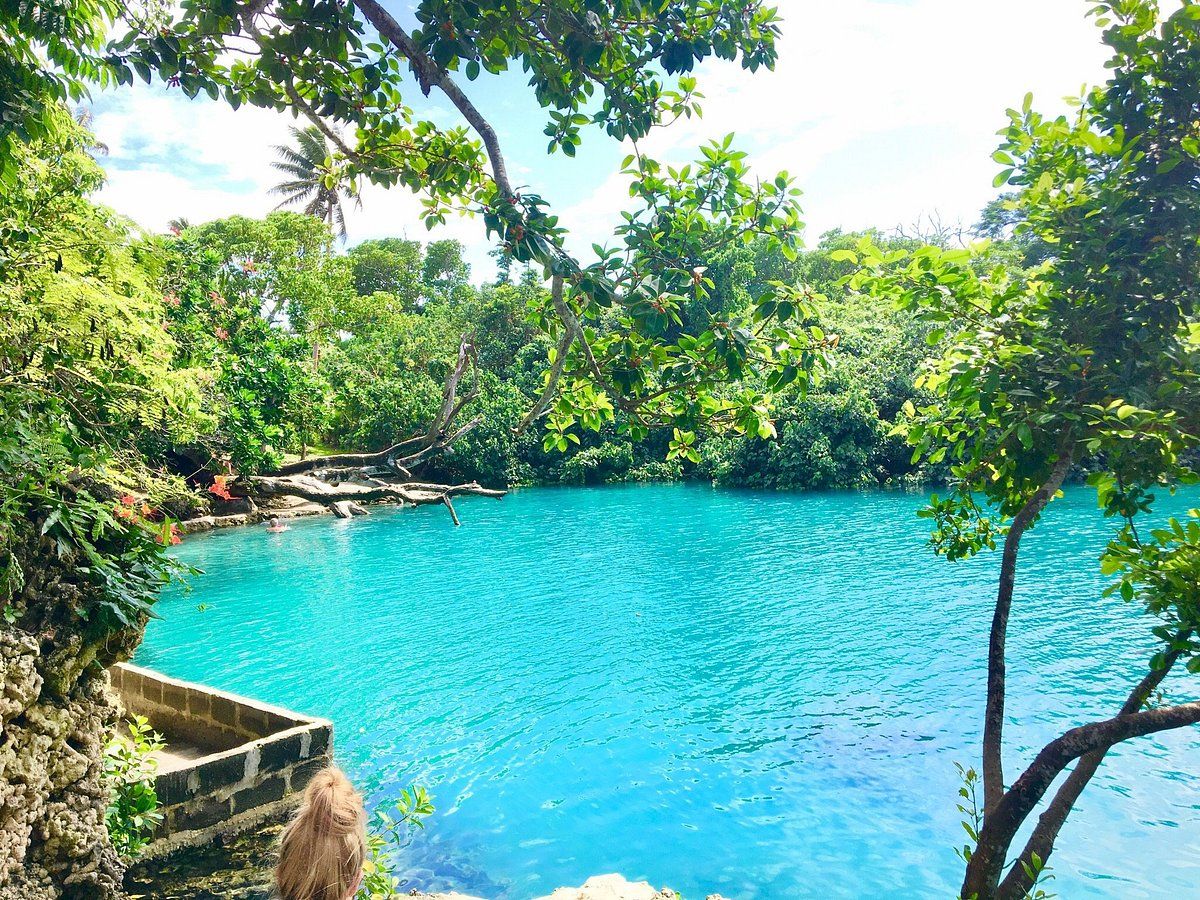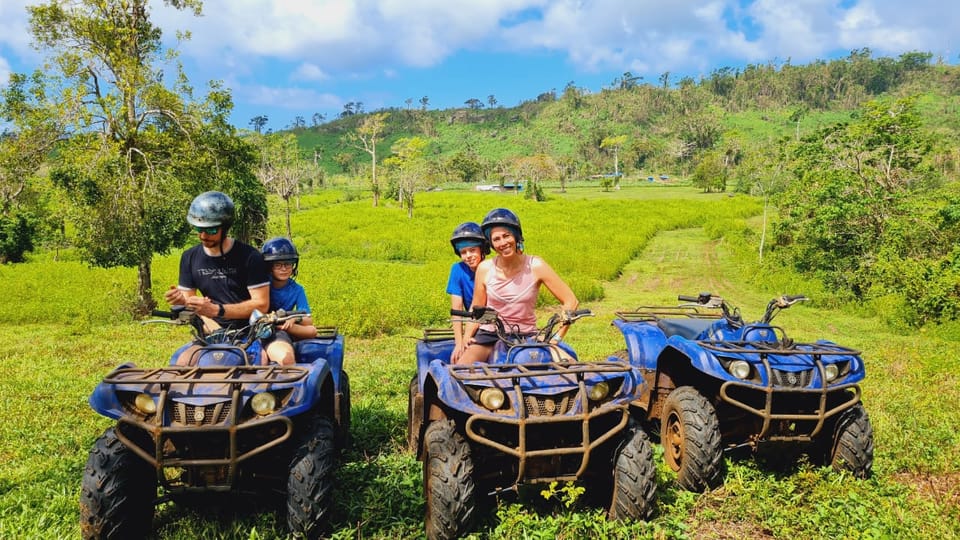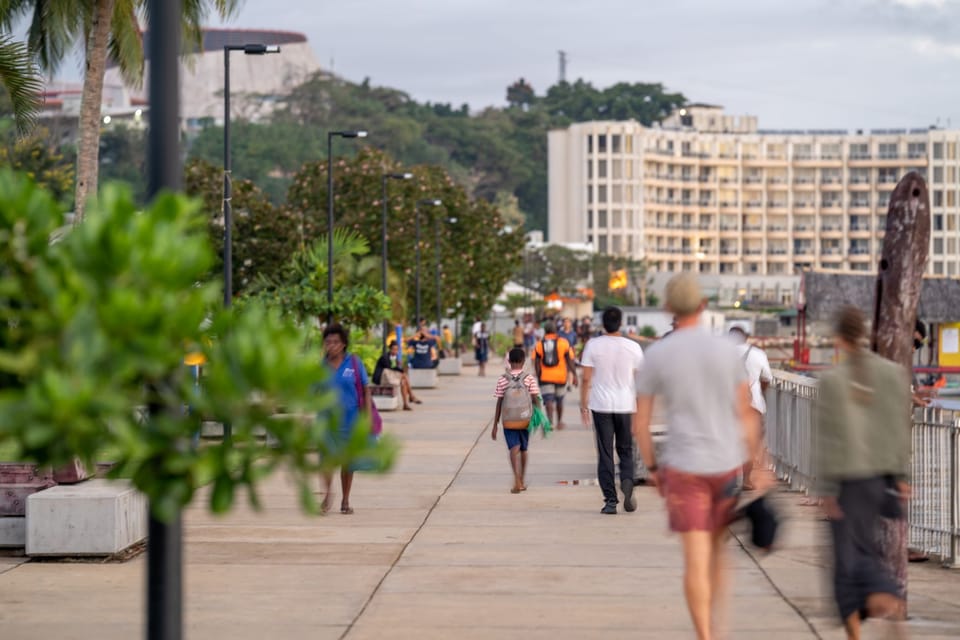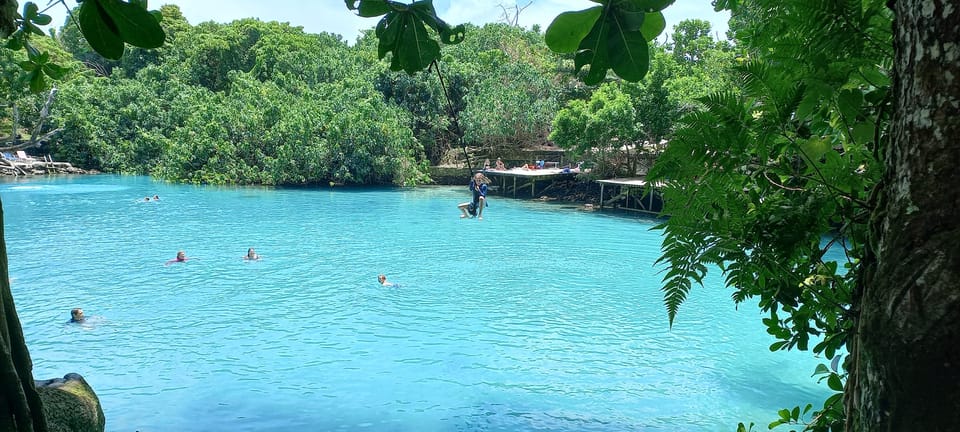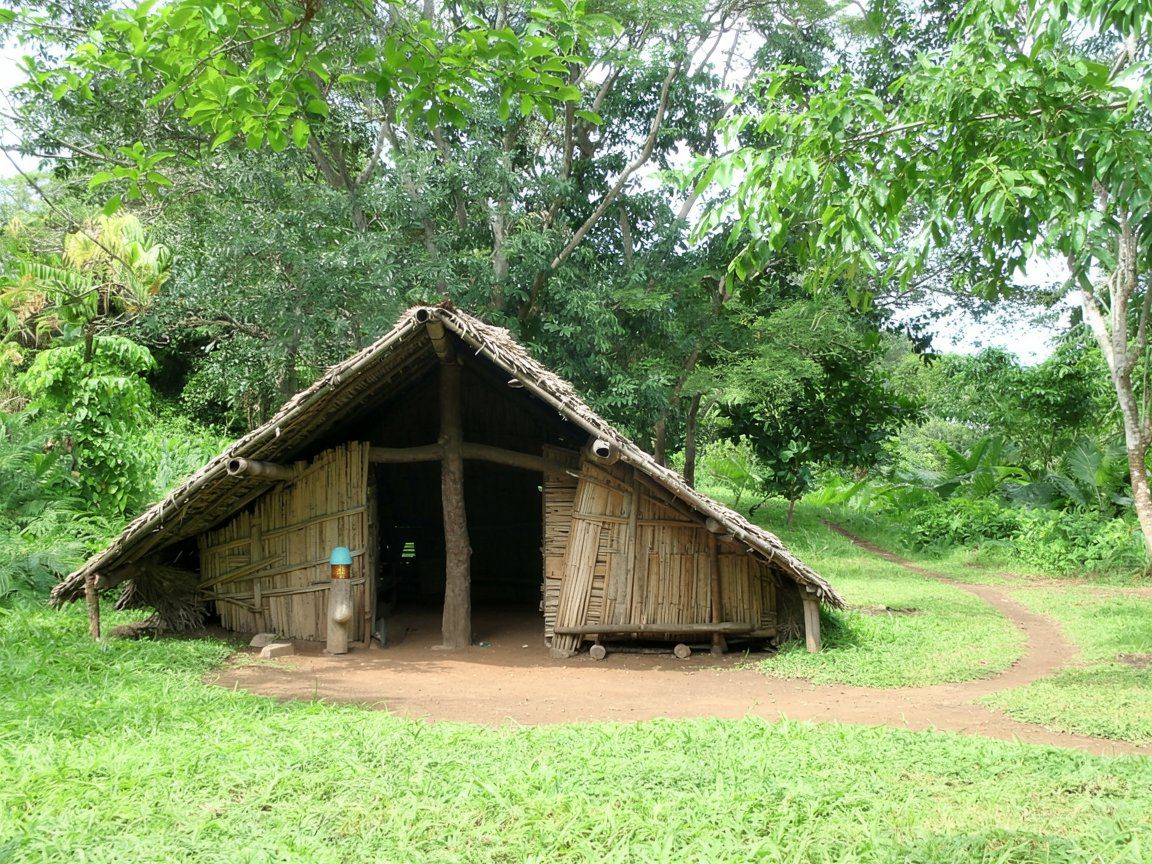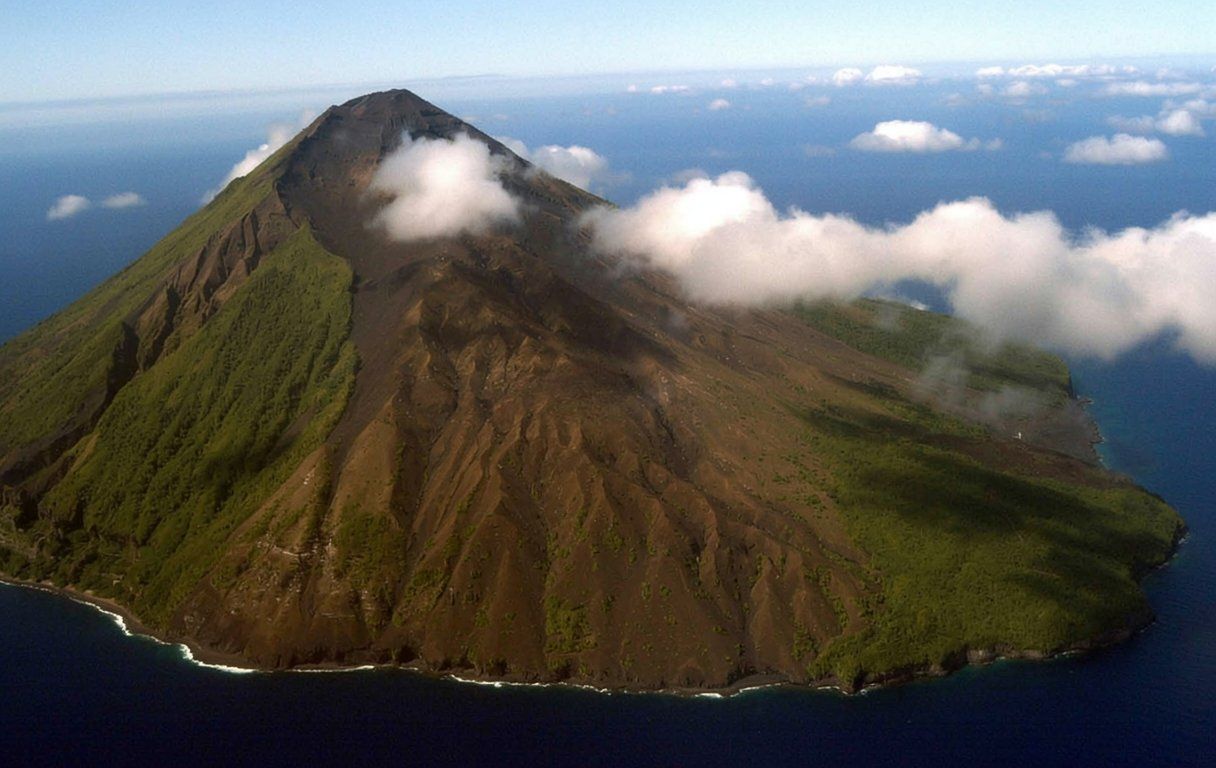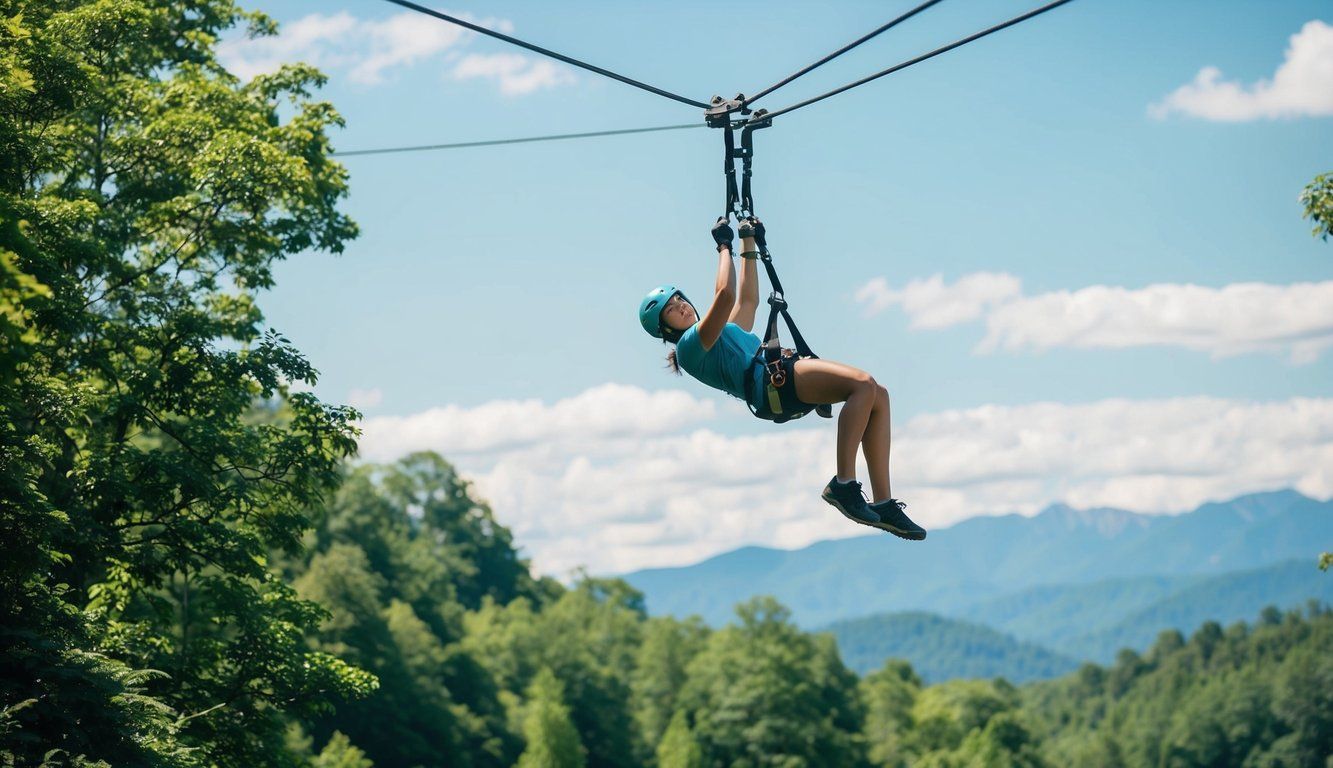Nestled in the sparkling waters of the South Pacific, Mystery Island is a tiny, uninhabited slice of paradise just off the coast of Aneityum in Vanuatu. Its official name is Inyeug, though it gained its more intriguing title in the 1980s when an Australian yacht captain dubbed it “Mystery Island” to attract visitors. This pristine island, with its white sand beaches and crystal-clear waters, has transformed from a World War II Allied forces site to one of Vanuatu’s most popular cruise ship destinations.
Today, Mystery Island welcomes visitors via cruise ships and twice-weekly commercial flights to its shores. Though no one lives permanently on the island, locals from neighboring Aneityum come across to sell handicrafts, offer tours, and share their culture with travelers.
Get a discount of 15% to 70% on accommodation in Vanuatu! Look for deals here:
Vanuatu Hotels, Apartments, B&Bs
The island remains largely undeveloped, maintaining its natural beauty as part of Melanesia’s stunning Pacific Ocean archipelago.
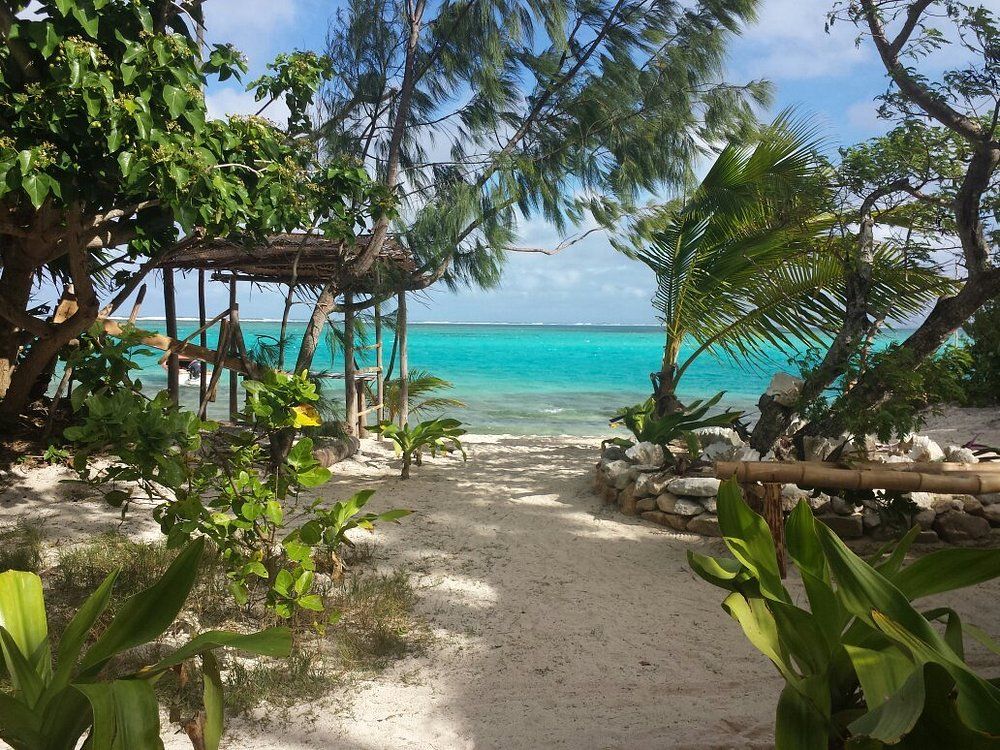
Historical Insights
Vanuatu’s rich history spans thousands of years, from ancient Melanesian settlements to European colonization and finally independence. The islands have witnessed significant cultural transformations while maintaining traditional customs through changing times.
Early Settlement and Melanesian Culture
Archaeological evidence shows human habitation in Vanuatu dating back to around 2000 BC. These early settlers were part of the Lapita people, skilled navigators who spread throughout the South Pacific islands.
Melanesian culture flourished across the archipelago, with distinct languages and customs developing on different islands. Traditional practices included elaborate ceremonies, intricate art forms, and complex social structures.
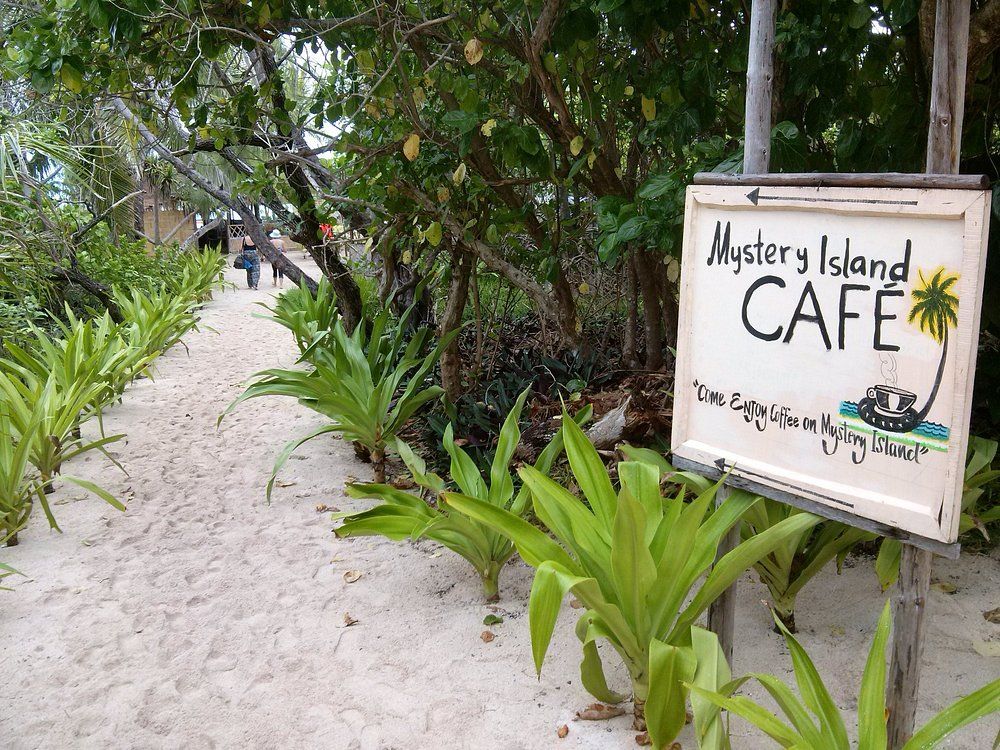
Some Western accounts mentioned cannibalism among certain tribes, though these reports were often exaggerated by European explorers. In reality, Vanuatu’s indigenous peoples developed sophisticated agricultural systems and maritime skills.
Spiritual beliefs centered around ancestor worship and natural forces. Village leaders and chiefs maintained social order through customary law systems that continue to influence modern governance.
Colonial Era and the New Hebrides
European contact began when Portuguese explorer Pedro Fernandes de Queirós sighted the islands in 1606. Captain James Cook later mapped the region in 1774, naming it the New Hebrides after islands off Scotland.
The 19th century brought traders seeking sandalwood and sea cucumbers. In 1844, British trader James Paddon established a permanent trading post on Aneityum Island, marking the beginning of regular European settlement.
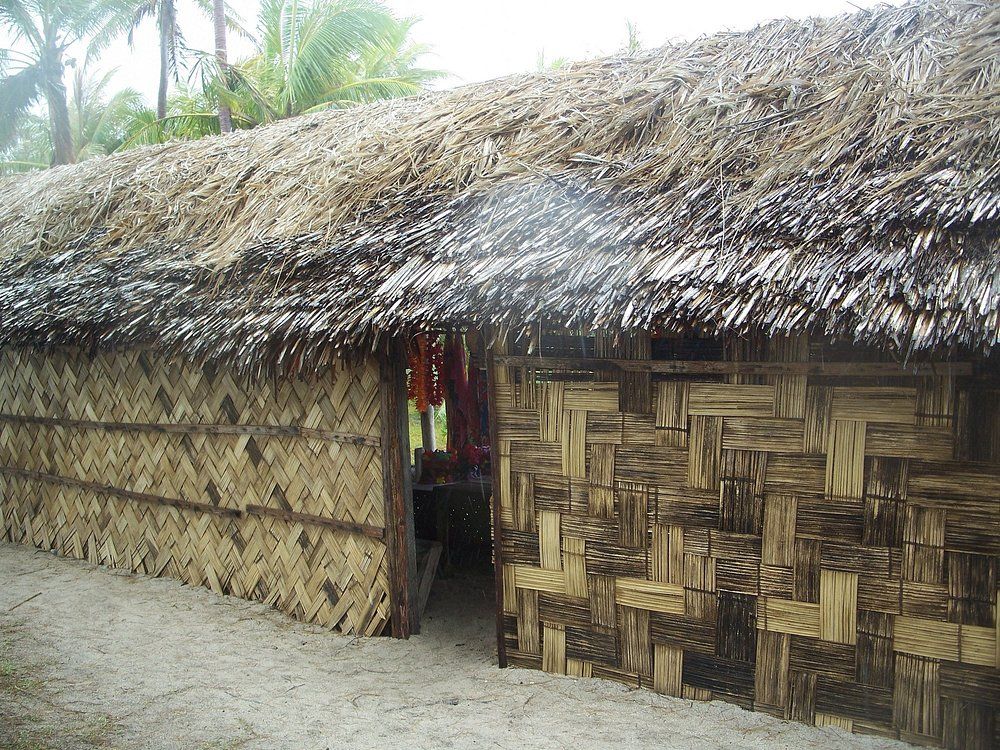
French and British colonial interests clashed over the archipelago. Rather than fight, they formed an unusual joint government called the British-French Condominium in 1906. This dual colonial system created parallel British and French institutions, including schools, police forces, and courts.
Missionaries arrived alongside traders, significantly altering traditional practices and beliefs. Christianity spread widely, though many islanders incorporated new religious elements into existing spiritual frameworks.
Path to Independence and Modern Vanuatu
Following World War II, a growing independence movement emerged among islanders frustrated by colonial rule. Local leader Father Walter Lini founded the Vanua’aku Party in the 1970s, advocating for self-governance.
The path to independence faced challenges from French settlers reluctant to lose colonial privileges. Despite these obstacles, the New Hebrides achieved independence on July 30, 1980, adopting the name “Vanuatu,” which means “land eternal.”
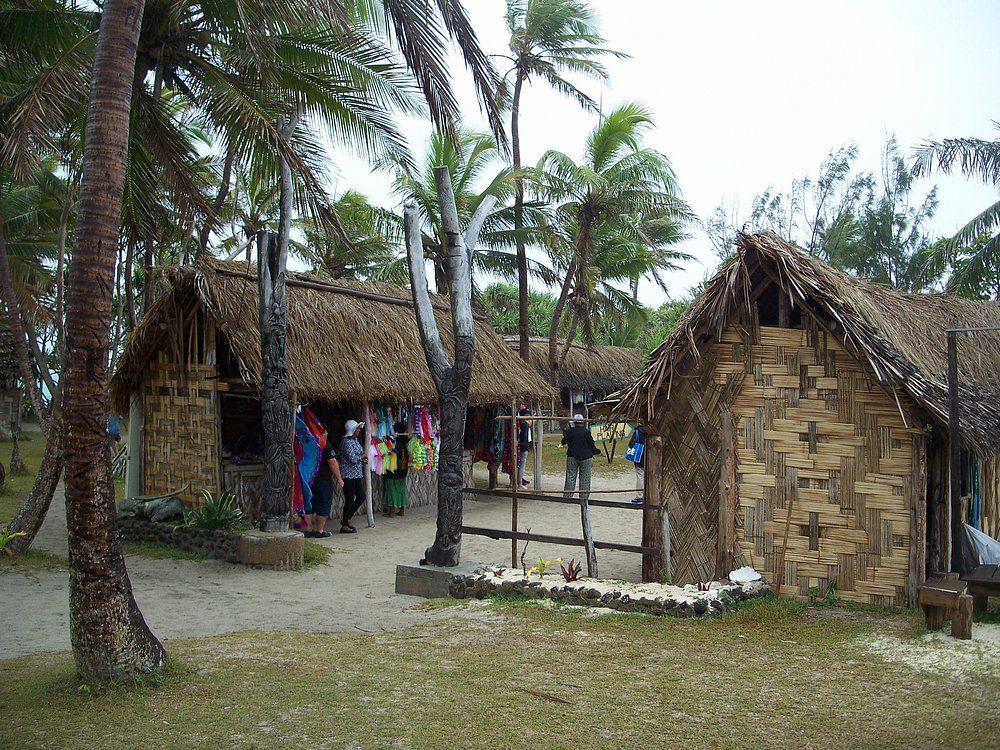
Post-independence Vanuatu established a parliamentary democracy while working to preserve traditional governance systems. The country joined the United Nations and Commonwealth of Nations, developing relationships with regional powers.
Today, Vanuatu balances modern development with cultural preservation. Tourism has become a vital economic sector, with visitors drawn to both natural beauty and cultural heritage. Mystery Island represents this blend, offering pristine beaches alongside glimpses into traditional Melanesian life.
Geography and Natural Wonders
Mystery Island and the broader Vanuatu archipelago feature dramatic landscapes shaped by volcanic activity and surrounded by vibrant marine ecosystems. The region sits at the intersection of geological forces that have created both challenges and natural wonders.
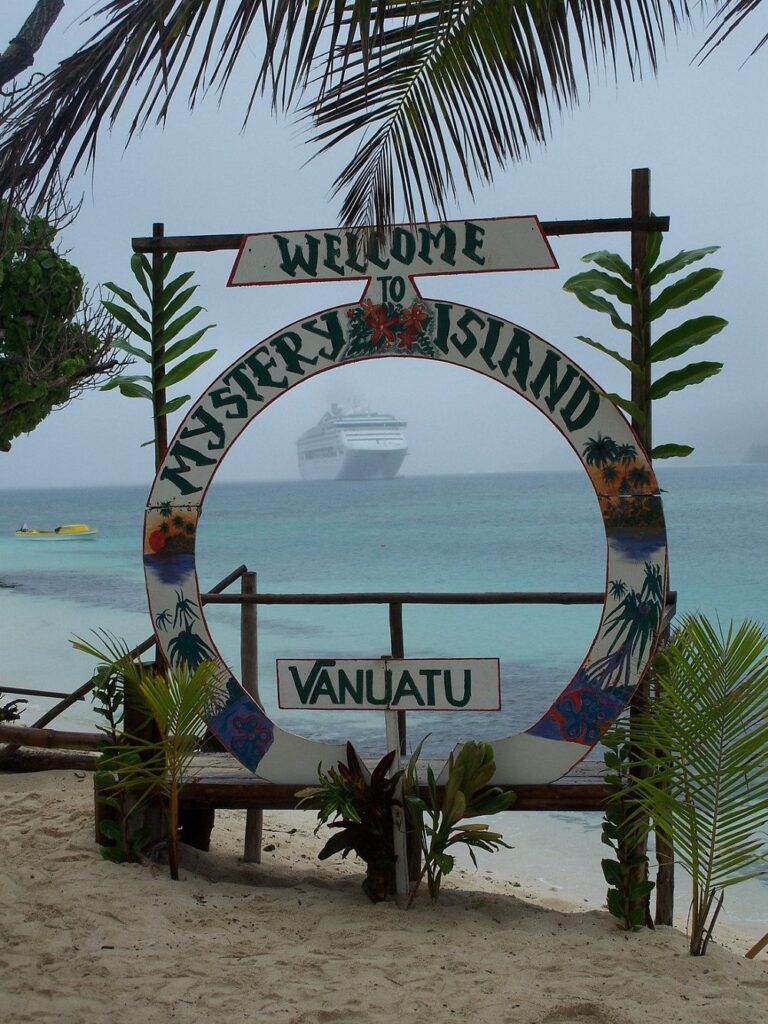
Island Formation and Volcanic Activity
Mystery Island forms part of Vanuatu’s 83-island archipelago, located along the Pacific Ring of Fire. This position on the boundary of tectonic plates has created Vanuatu’s distinctive mountainous terrain through millions of years of volcanic activity.
The archipelago sits where the Australian and Pacific plates meet, generating regular seismic activity. This geological setting has produced islands with varying formations, from rugged volcanic mountains to flat coral atolls.
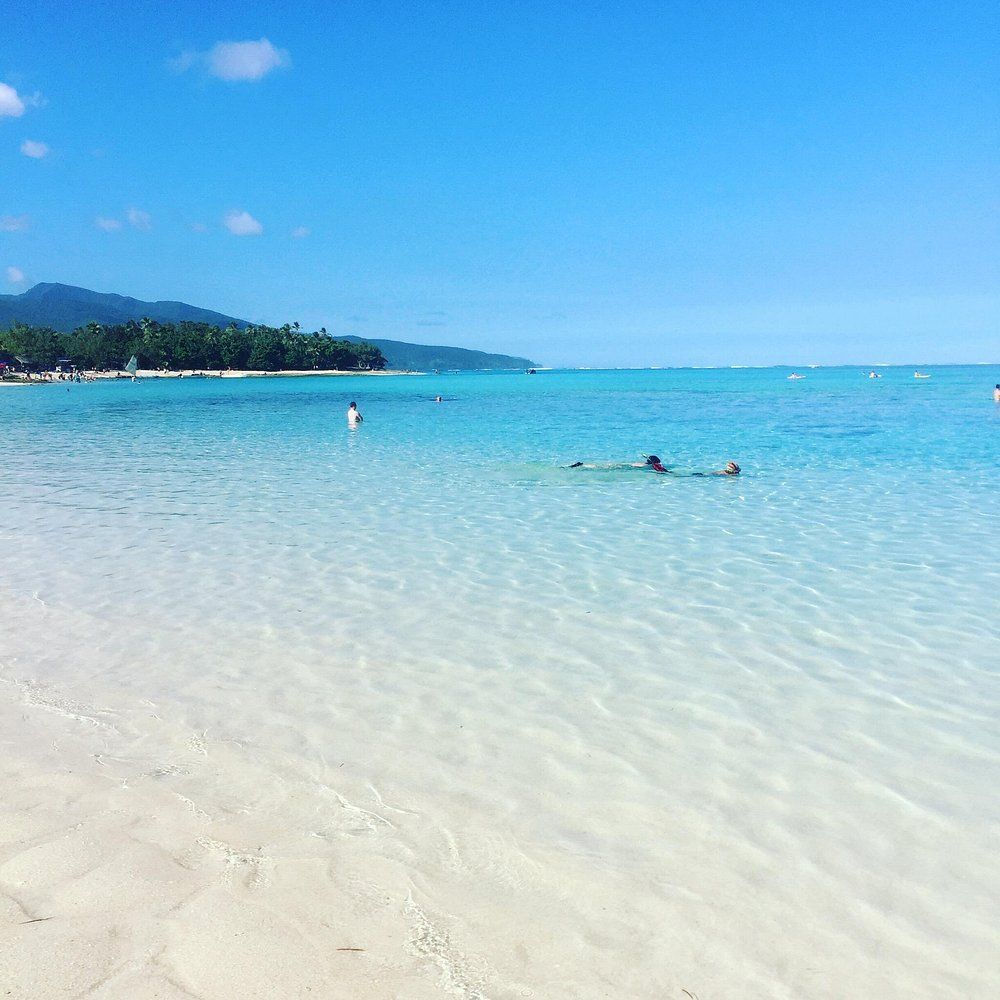
Ambrym Island, north of Mystery Island, features one of Vanuatu’s most active volcanic systems with a massive caldera and persistent lava lakes. The volcanic soil throughout Vanuatu creates exceptionally fertile ground, supporting lush vegetation across the islands.
Diverse Ecosystems and Coral Reefs
Mystery Island is surrounded by pristine coral reefs that support a remarkable diversity of marine life. The clear waters host over 4,000 species of fish and hundreds of coral varieties.
The island’s terrestrial ecosystems include coastal vegetation zones with pandanus trees and tropical forests inland. These habitats support unique bird species, colorful butterflies, and distinctive plant life.
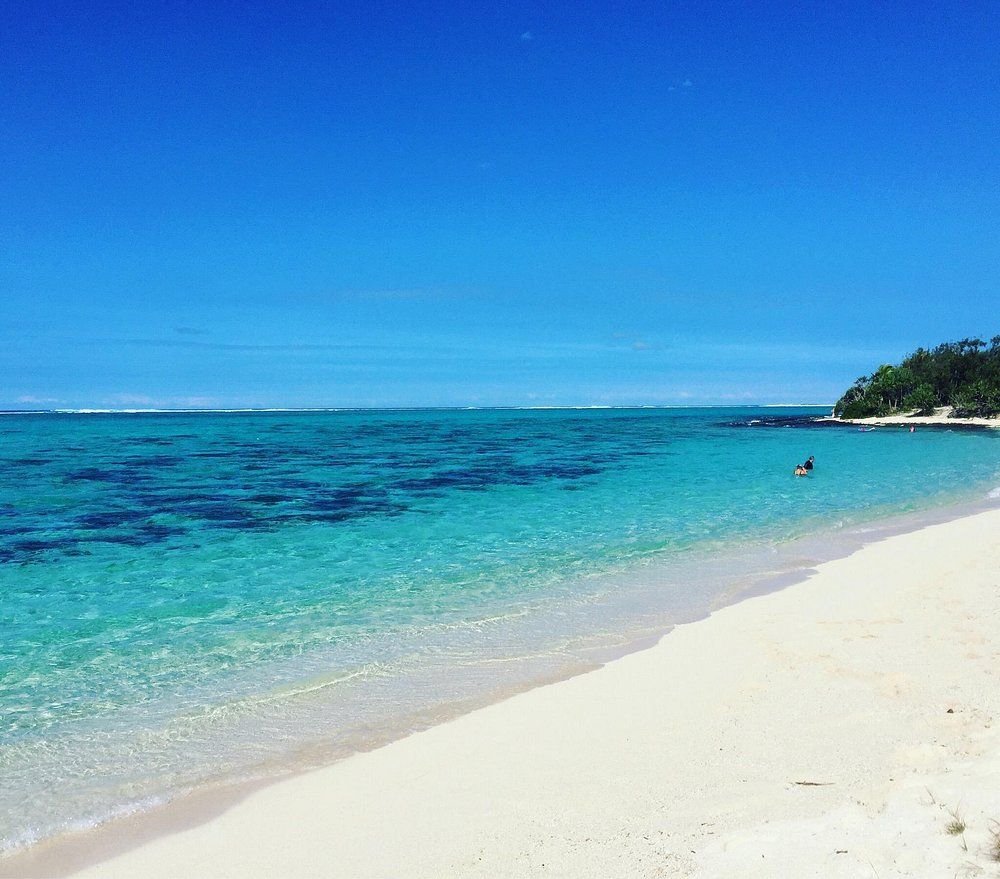
Vanuatu’s marine protected areas preserve critical coral reef systems from environmental threats. The waters around Mystery Island feature dramatic underwater topography, including walls, caves, and coral gardens that attract divers from around the world.
Marine biodiversity peaks in the channels between islands, where nutrient-rich currents support vibrant marine communities.
Mount Yasur: An Accessible Volcano
On nearby Tanna Island, Mount Yasur stands as one of the world’s most accessible active volcanoes. Rising 361 meters above sea level, this constantly active volcano has erupted regularly for hundreds of years.
Visitors can approach the crater’s edge to witness spectacular displays of molten lava and explosive eruptions. The local Tannese people consider Mount Yasur sacred, incorporating the volcano into their spiritual beliefs and customs.
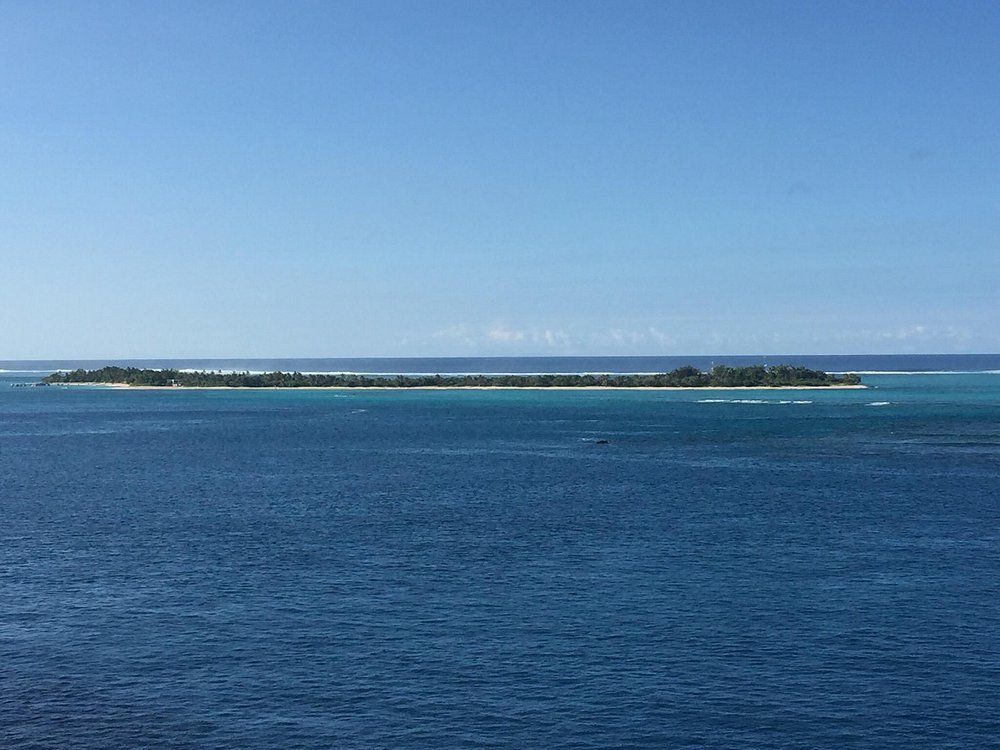
The volcano’s activity levels are monitored daily and ranked on a scale of 0-5 for visitor safety. Even at night, Mount Yasur creates a natural light show as glowing magma illuminates the sky.
The relatively short 45-minute hike to the crater makes it uniquely accessible compared to other active volcanoes worldwide.
Traveler’s Guide to Mystery Island
Mystery Island offers a perfect blend of pristine beaches, crystal-clear waters, and authentic cultural experiences. Visitors can explore this uninhabited paradise through day trips while enjoying various activities and natural attractions.
Getting to and Around Vanuatu
Air Vanuatu operates regular flights to Port Vila, Vanuatu’s capital, from Australia, New Zealand, and Fiji. From Port Vila, travelers can reach Mystery Island via smaller domestic flights to Aneityum Island, followed by a short boat ride.
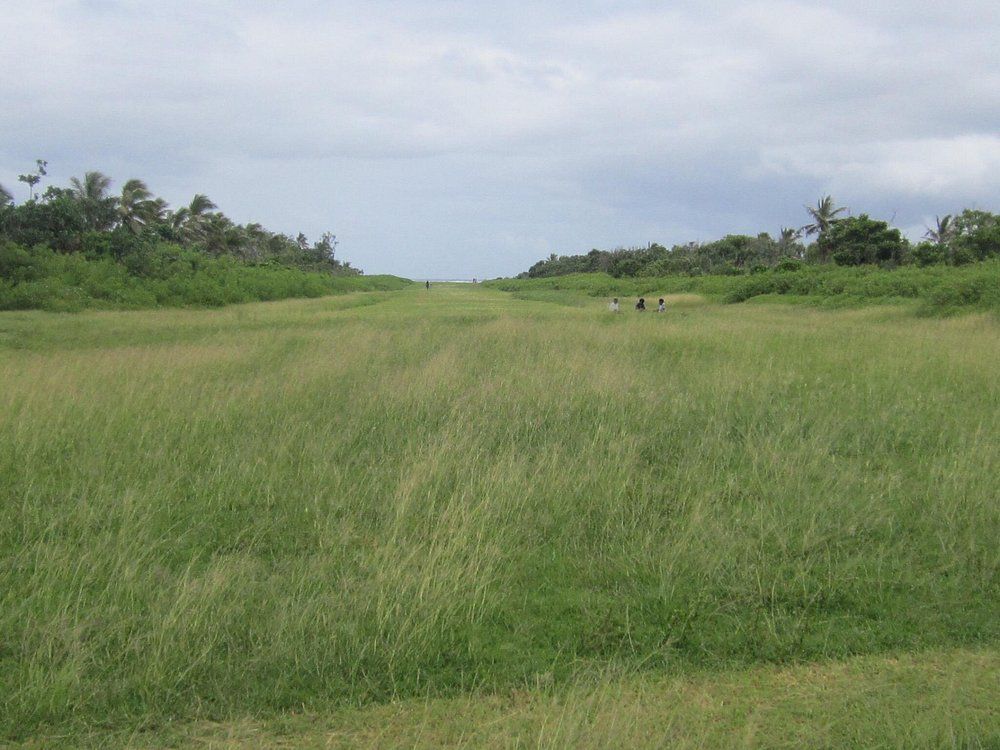
Most visitors arrive at Mystery Island as part of a cruise ship itinerary. Major cruise lines like Holland America and Oceania Cruises include this destination in their South Pacific routes.
Transportation on Mystery Island is entirely on foot as the island is small enough to walk around in about 30 minutes. No cars or public transportation exist on this uninhabited island.
TripAdvisor reviews recommend arriving early if visiting via cruise ship. The first tenders from ships offer the best chance to secure prime beach spots and rental equipment.
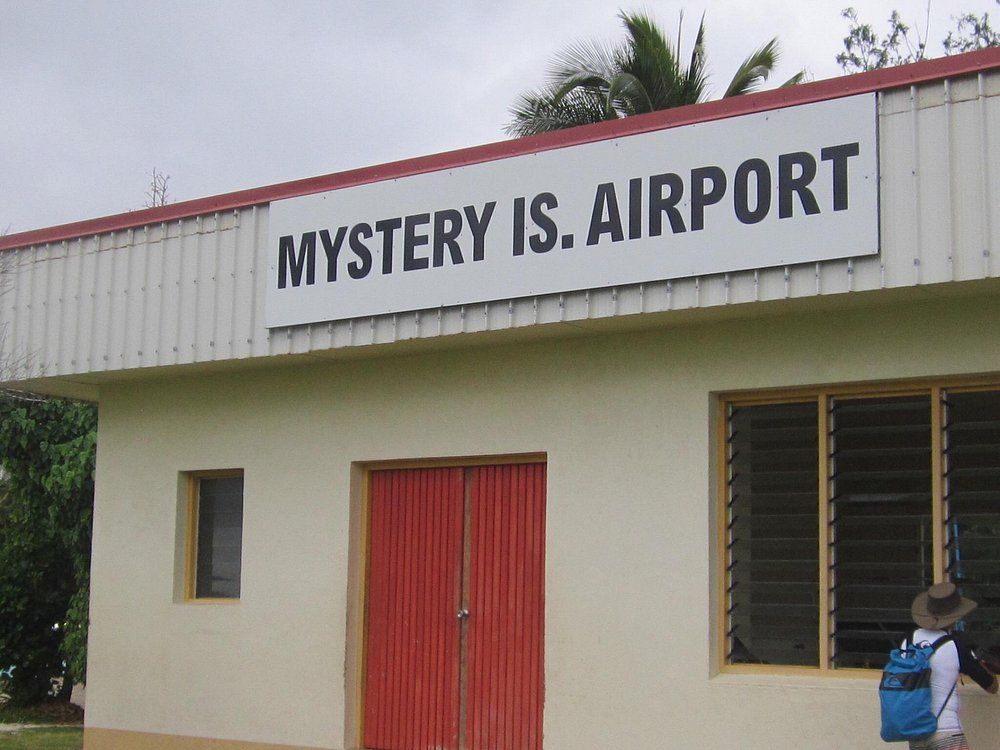
Accommodations and Where to Stay
Mystery Island itself has no permanent accommodations as it remains uninhabited. Day visitors return to their cruise ships in the evening.
For overnight stays, neighboring Aneityum Island offers several guesthouse options with basic amenities. These family-run accommodations provide authentic local experiences at reasonable rates.
Popular choices include:
- Mystery Island Bungalows – Simple beachfront huts with breakfast included
- Aneityum Guest House – Family-run accommodation with home-cooked meals
- Port Patrick Lodge – Slightly more upscale option with private bathrooms
Advance booking is essential as capacity is limited. Most properties don’t maintain websites, so arrangements typically happen through Vanuatu Tourism Office or local travel agencies.
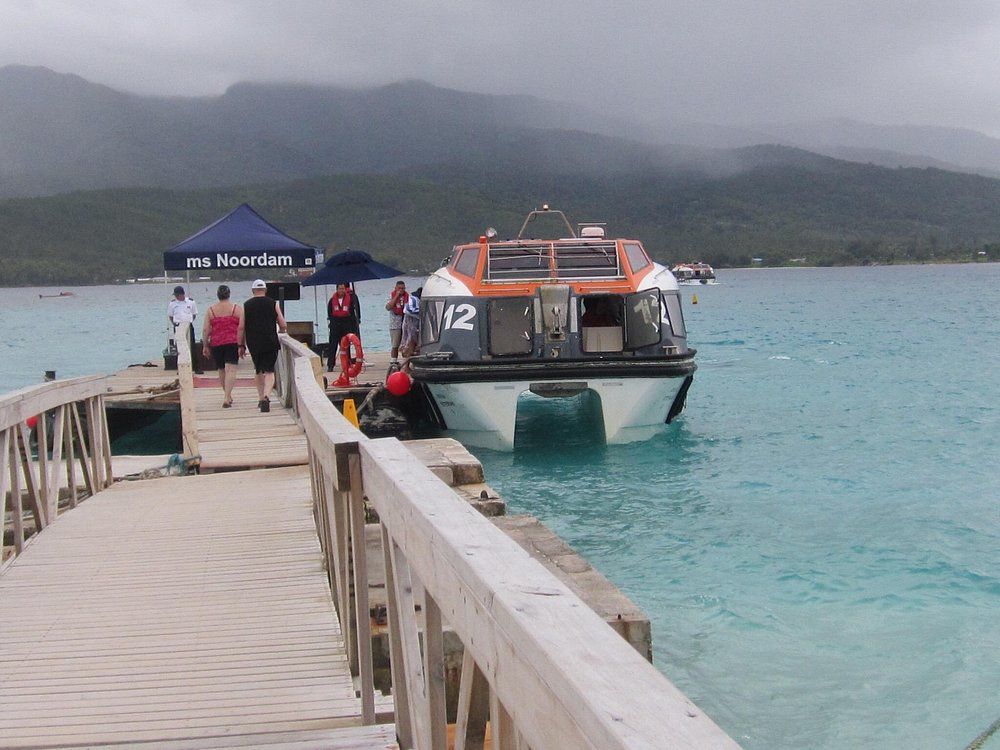
Must-Visit Attractions and Experiences
Mystery Island’s main draw is its stunning natural beauty. The white-sand beaches and turquoise waters offer perfect conditions for swimming and snorkeling. Coral reefs surrounding the island teem with colorful fish and marine life.
Beach chair and umbrella rentals cost approximately $5 per day. Visitors should bring their own snorkeling equipment if possible, though limited rentals may be available.
The local market near the tender point showcases handcrafted souvenirs and fresh tropical fruits. Visitors can purchase unique items while supporting the local economy.
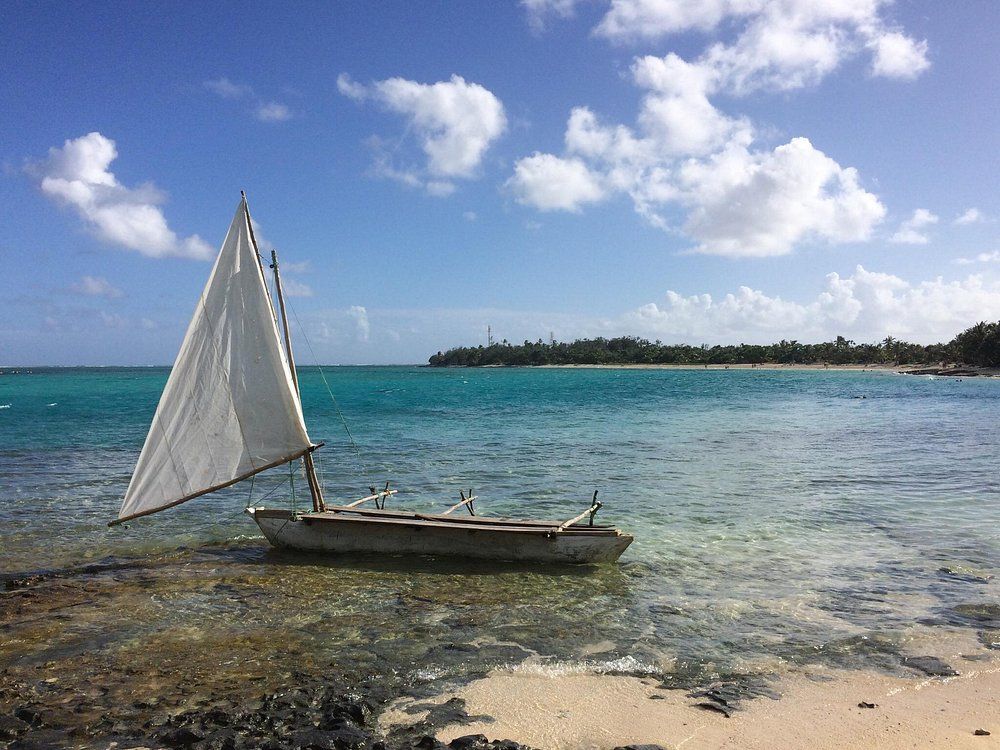
Water activities include:
- Snorkeling the coral reefs
- Kayaking along the coastline
- Paddleboarding in the calm lagoon
Cultural demonstrations by residents of Aneityum Island showcase traditional dances, music, and crafts. These performances provide insights into Vanuatu’s rich cultural heritage.
Cultural Heritage and Contemporary Life
Vanuatu’s rich cultural tapestry reflects thousands of years of Melanesian heritage. The islands preserve ancient traditions while embracing contemporary influences that shape daily life for ni-Vanuatu people.
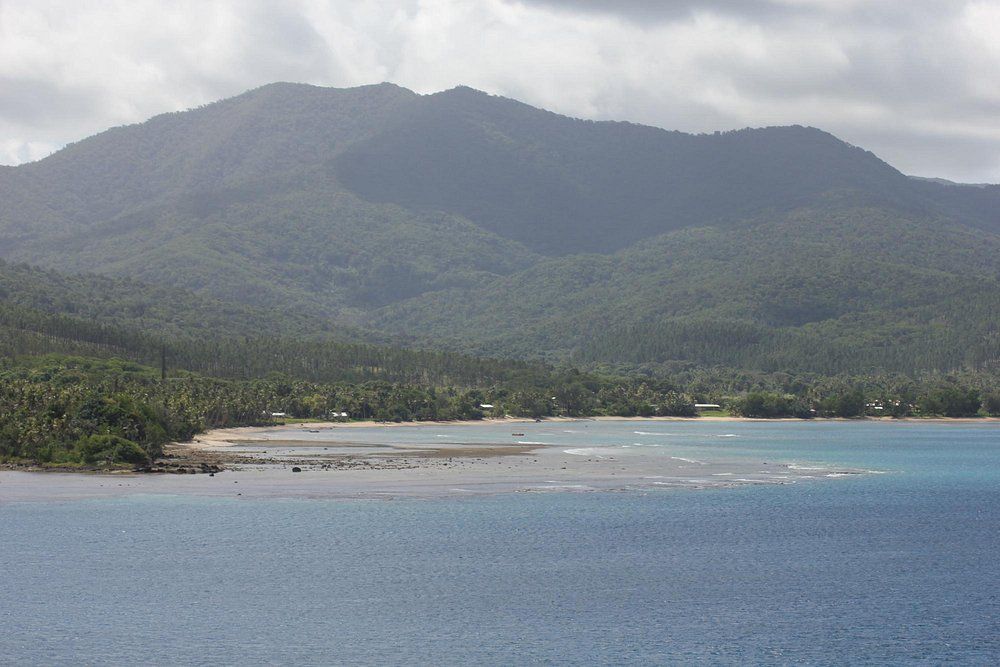
The Melanesian Way of Life
The Melanesian culture of Vanuatu varies significantly across its islands. On Malekula, two distinct cultural groups—the Small Nambas and Big Nambas—maintain traditional practices dating back centuries. These names refer to the size of the men’s traditional dress.
Land ownership follows different systems throughout the archipelago. Some communities practice matrilineal descent, while others follow patrilineal traditions. This diversity reflects the complex social structures that have evolved independently on different islands.
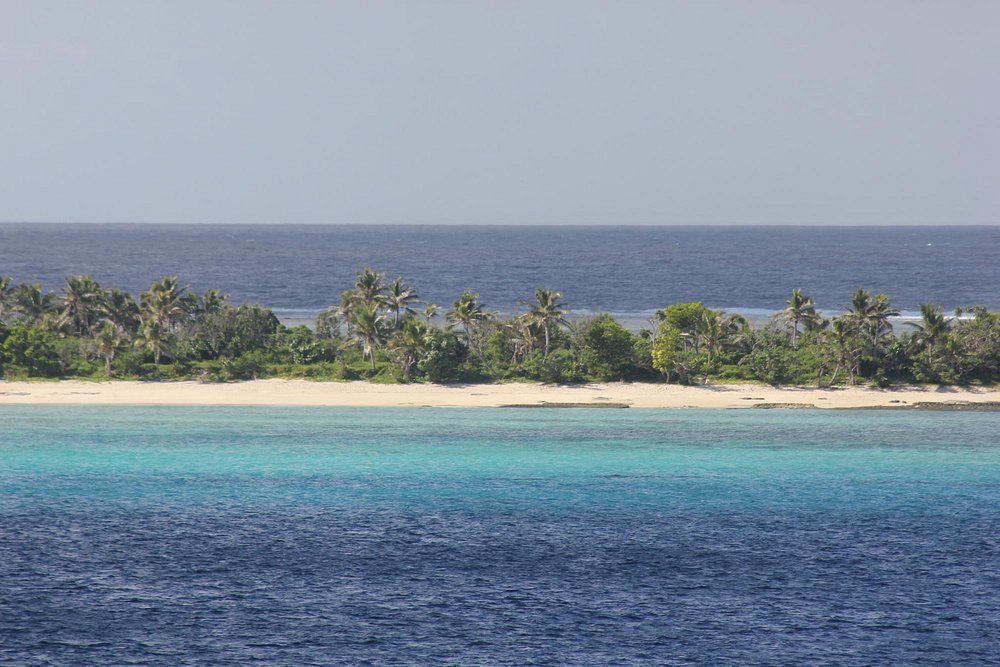
Daily life revolves around community cooperation and respect for tradition. Many ni-Vanuatu still practice subsistence farming and fishing, particularly in rural areas away from tourist centers. Extended family networks provide social security and maintain cultural continuity.
Cultural Festivals and Traditions
Sand drawing represents one of Vanuatu’s most distinctive cultural expressions. This UNESCO-recognized art form serves as both communication tool and artistic tradition across generations.
The land diving ritual on Pentecost Island (Naghol) inspired modern bungee jumping. Young men leap from wooden towers with only vines tied to their ankles to ensure a bountiful yam harvest. This dangerous ceremony typically occurs between April and June.
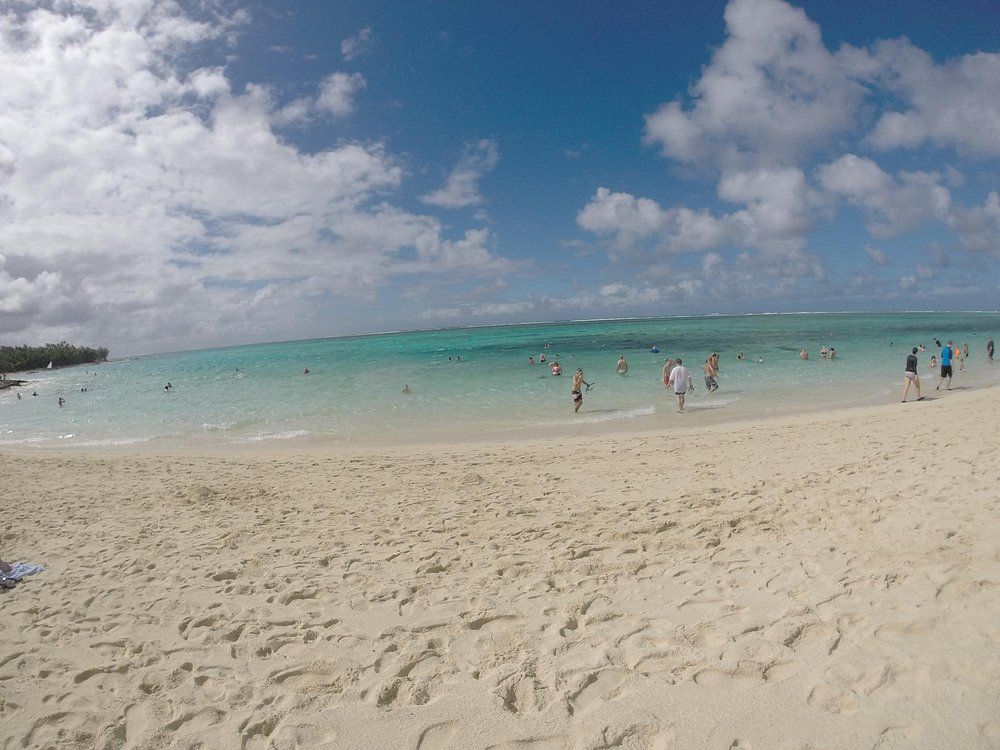
On Maewo, the Rah Stone Money Ceremonies demonstrate the complex exchange systems that have historically connected island communities. These ceremonies reinforce social bonds and redistribute wealth through traditional means.
Music and dance remain central to cultural expression. Bamboo bands, string bands, and traditional percussion accompany ceremonies throughout the archipelago.
Interaction with Local Communities
Visitors can experience Vanuatu’s living culture through respectful engagement with local communities. Many villages welcome tourists for cultural demonstrations, though photography may require permission.
Several community-based tourism initiatives offer authentic cultural experiences. These programs directly benefit local economies while preserving traditional knowledge and practices.
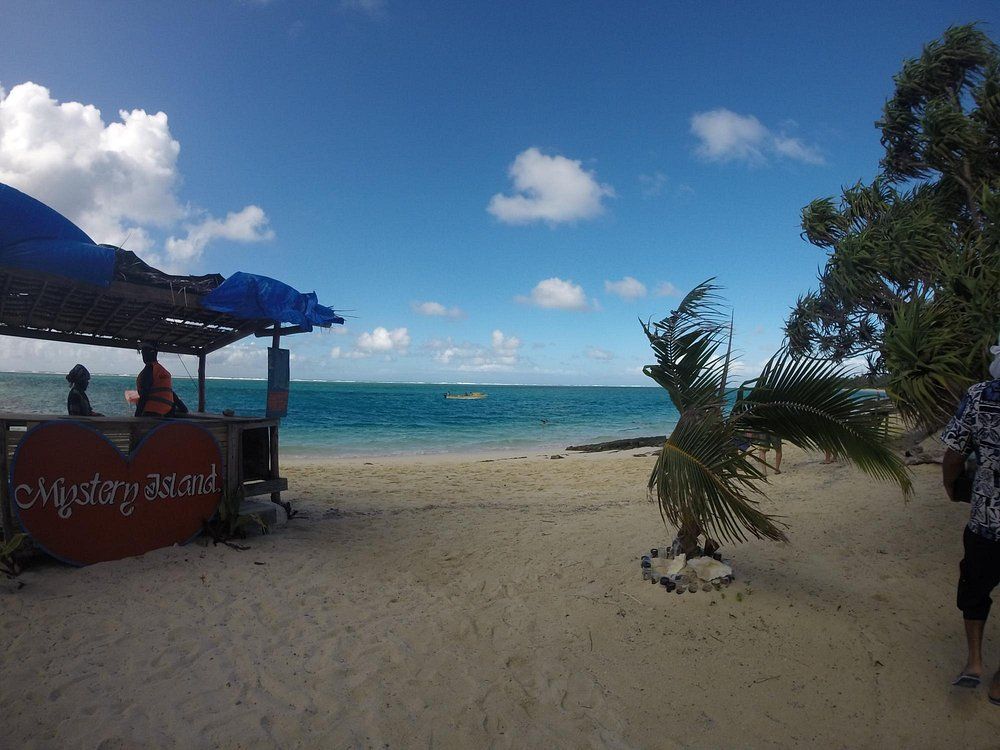
When visiting Mystery Island and surrounding areas, travelers should dress modestly and follow local customs. The “kastom” (customary law) remains important in daily interactions.
Bringing small gifts when visiting villages demonstrates respect. Kava, a traditional ceremonial drink, often facilitates social connections between visitors and hosts.
Get a discount of 15% to 70% on accommodation in Vanuatu! Look for deals here:
Vanuatu Hotels, Apartments, B&Bs

